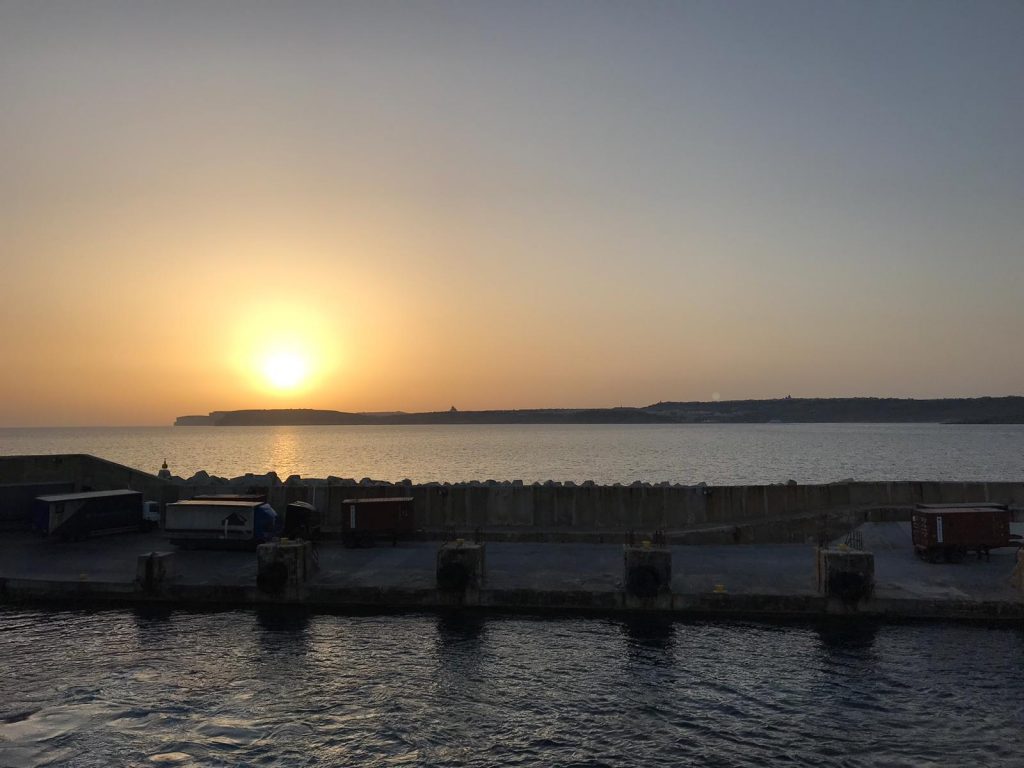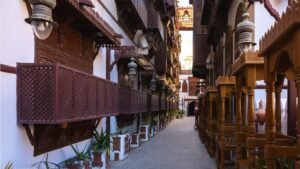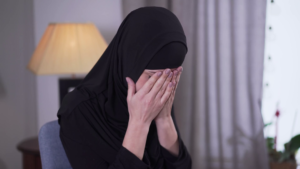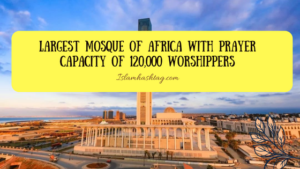Visit to Malta with Mufti Ahmad Khanpuri and Colleagues By Yusuf Shabbir
In the name of Allah, the Compassionate the Merciful
Day 1 – Thursday 6 June 2019
Introduction
One hundred years ago, a prominent figure from India was imprisoned with his students and colleagues some 4000 miles away in the remote Island of Malta, then under British colonial rule. Shaykh al-Hind (the Shaykh of India, a title bestowed upon him on his return to India, although Mawlānā Ashraf ʿAlī Thānawī d.1362/1943 preferred the title Shaykh al-ʿĀlam, Shaykh of the world, see Malfūẓāt, 5:300), Mawlānā Maḥmūd Ḥasan Deobandī (d. 1339/1920) was arrested in Hejaz (Saudi Arabia) and transported to Malta via Egypt, along with a small group of colleagues and students including Mawlānā Ḥusayn Aḥmad Madnī (d. 1377/1957), who was later given the title of Shaykh al-Islam. These two personalities played a leading role in supporting the Ottoman Caliphate and liberating India from colonial rule. Along with their involvement in political struggles, they were accomplished scholars with expertise in the various Islamic disciplines and a track record of teaching in Darul Uloom Deoband and authoring a few works (refer to Nuzhat al-Khawāṭir 8:1379, 1216 for a list of their publications). Their profound knowledge and wisdom, spirituality and piety, simplicity and political astuteness combined with their sacrifices made them from among Asia’s leading revolutionary figures. Their three-year incarceration in Malta between 1917 and 1920 is perhaps their most well renown and inspirational sacrifice, which continues to be acknowledged today by Muslims and non-Muslims, despite the passing of a century.
It is within this context that our respected Mufti Ahmad Khanpuri (b. 1365/1946), who visits us in the UK every year, desired visiting Malta to better understand the unique story of the Prisoners of Malta.
Arrival into Malta
It was decided that a group of us from the UK would accompany Mufti Aḥmad Khanpuri and his colleagues on this journey. The group comprised of Mawlana Hanif Dudhwala, Mawlana Rafiq Sufi, Dr Mawlana Asmar Akram, Abid Bhai Dammani of Leicester and myself. We depart from Manchester Airport on the 6am Thomas Cook flight and arrive into Malta International Airport situated in Luqa at 10.30am. The journey takes three and a half hours, the time difference is one hour. The flight is full of tourists, as Malta is a popular tourist destination, and there are many cheap holiday flights that fly here from various UK Airports.
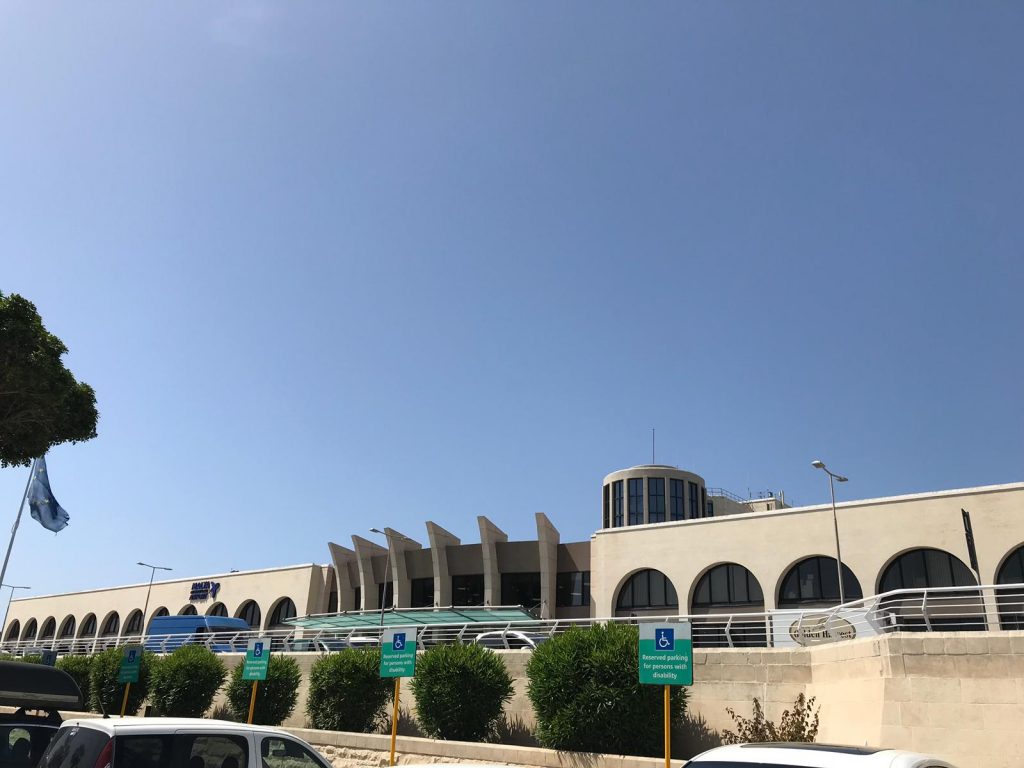
Malta
The Republic of Malta is a small island country located in the Mediterranean Sea, 50 miles south of Italy (Sicily), 176 miles east of Tunisia and 207 miles north of Libya. The country consists of an archipelago (group of islands), the three major islands are Malta, Gozo and Comino. Malta is the largest of these islands, 17 miles long and 9 miles wide. Its capital is Valletta, sometimes the main island is referred to as Valletta to distinguish it from the rest of the country. The total population of the Republic is estimated to be 475,000, making it from among the most densely populated countries.
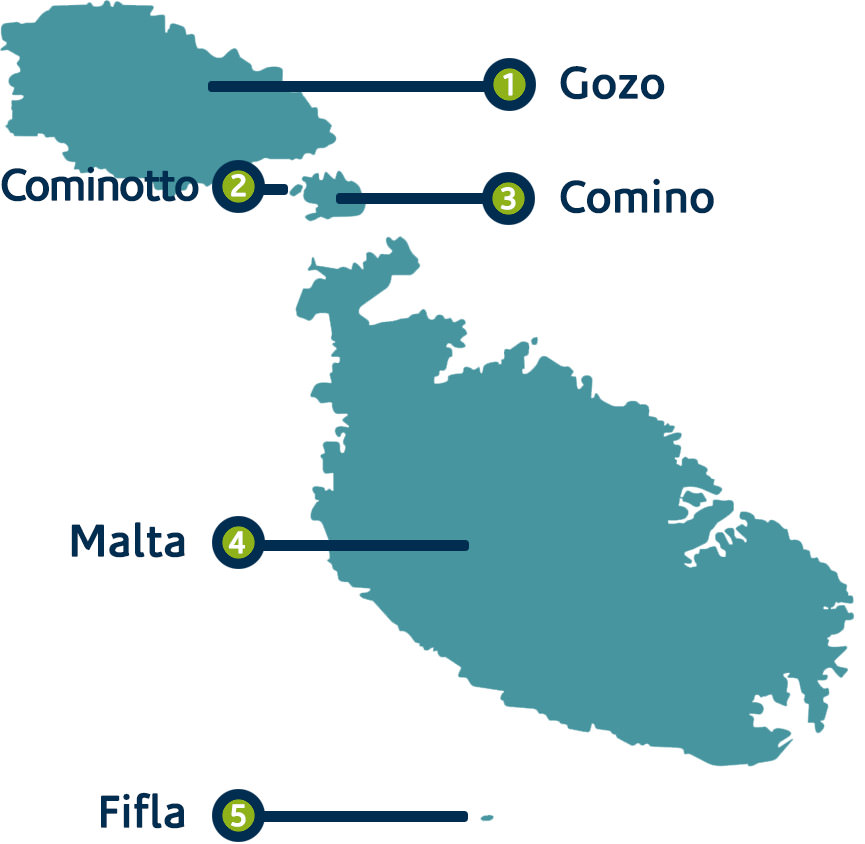
Historically, the country’s location in the centre of the Mediterranean made it a strategic location for a naval base. The country has been inhabited since approximately 5900 BC and a succession of powers ruled the island including the Romans, Greeks and Arab Muslims. Many historical fortresses, megalithic temples and subterranean complex of halls and burial chambers exist to date. In 1815, Malta became a British colony, serving as the headquarters for the British Mediterranean Fleet. It was also an ideal place geographically and as an island to house prisoners. In 1964, the country gained independence and in 2004, it joined the European Union. Accordingly, Indian Nationals require the Schengen visa.
Our hosts
We are warmly received at the airport by our hosts Shaykh Muwaffaq and Shaykh Badr. Shaykh Muwaffaq is a Lebanese businessman who trades in envelopes. He has resided here for forty years and is involved with the Tabligh Jamat movement. It is the blessing of this movement that we were connected to him through a contact in Paris. His colleague Shaykh Badr is of Palestinian origin. He speaks English, Maltese and Arabic and works as an interpreter and an adviser within a government ministry.
We head from the Airport to the Al Fateh Mosque in Floriana which is a fifteen-minute drive. The mosque is located within the Ministry of Education’s complex and was given to the Muslim community to use. Shaykh Badr explains that there are approximately 30,000 Muslims residing in Malta, the number has increased in recent years due to the influx of refugees from Libya and Syria. There are 12 prayer facilities (muṣalla) in the country and the Malta Muslim Council Foundation acts as the coordinating body for Muslims. The most prominent mosque is the Mariam Al-Batool Mosque in Paola which was financed by Muammar Gaddafi and opened its doors in 1982.
There are some Qadiyanis (Ahmedis) on the island who have recently become active within the media and political arenas. This is a cause of concern. Their activities include meeting with politicians and organising Eid parties. Shaykh Badr requests us to share with him the legal and religious edicts in relation to their non-Muslim status.
Arab influence
The official languages in the Republic are Maltese and English, with Maltese recognised as the national language. We notice that it is very similar to Arabic. Maltese is a Semitic language, but it is not Arabic nor a dialect of Arabic. Its ancestor is Siculo-Arabic, a variant which was spoken on Sicily, died out there, but continued evolving on in Malta.
Muslims conquered Malta in 255 Hijrī (870 CE) (al-Kāmil, 6:182; Tārīkh Ibn Khaldūn, 4:257, 6:401; al-Rawḍ al-Miʿṭār, p.520) and ruled here until 1091 CE. This was followed by a return to Christian rule, although Muslims continued to dominate demographically and economically for another 150 years Subsequently, Catholicism was forced upon the inhabitants and Muslims were forced to leave or convert to Christianity. Some Muslims did convert and this perhaps explains how the Maltese language survived with it. It is suggested that the strongest legacy of Islam here is the Maltese language, which is the only Semitic language in the European Union. Many place names are Arabic as well as road names and surnames. The Maltese for road/street is Triq, derived from the Arabic ṭarīq, visible on every street sign.
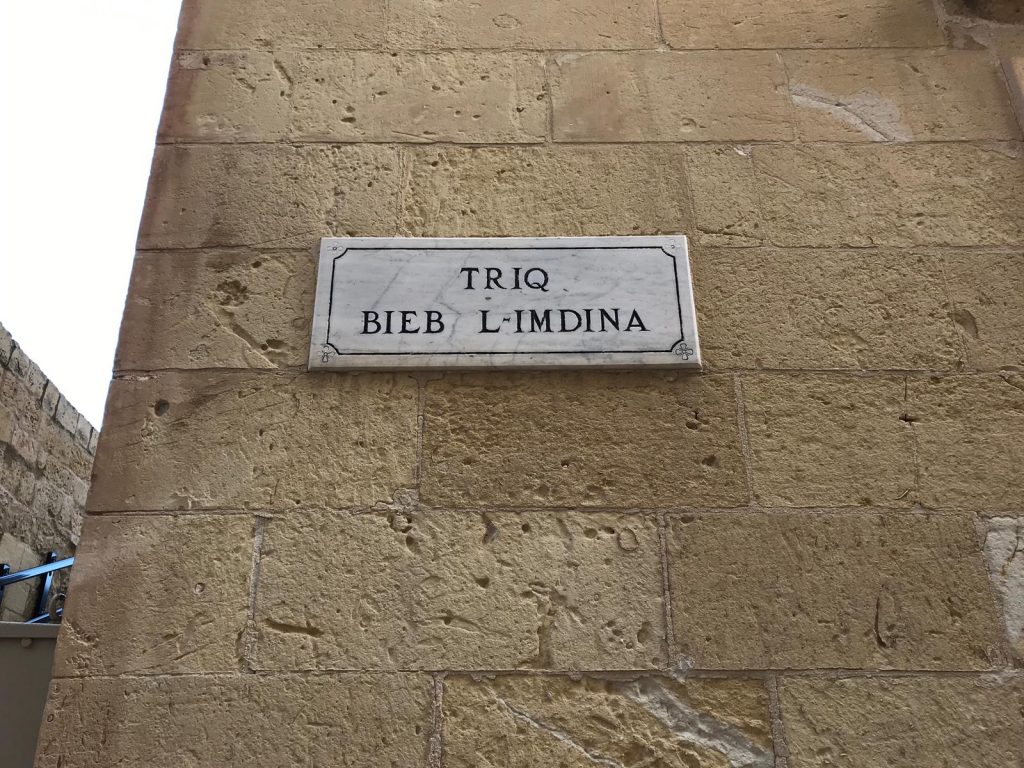
We arrive at the Al Fateh Mosque in Floriana just after midday and rest for the afternoon.
Arrival of Mufti Ahmad Khanpuri and colleagues
Our honourable guests from India, Mufti Ahmad Khanpuri, Mawlana Ibrahim Pandor, Mufti Mahmood Bardoli and Qari Abdul Hannan land at 2.10pm. There are no direct flights from India to Malta. They departed from Ahmedabad at 4.25am via Emirates Airlines and arrive into Malta thirteen hours later. Shaykh Muwaffaq receives them at the Airport and brings them to the Al Fateh Mosque shortly after 3pm. We eat lunch at the mosque, perform our prayers and agree an itinerary for the next two days.
(The following two sections have been revised at a later date to reflect the fact that we visited Fort Pembroke, not Fort Verdala, for further details refer to our subsequent travelogue which is also available online)
Verdala International School (Fort Pembroke)
Our first stop after ʿAṣr Ṣalāh is Verdala International School, currently located in Fort Pembroke. Our guide misunderstood this to be Fort Verdala. We were warned in advance that the school will be closed and we will be unable to access the fort. However, as we arrived into the car park, the gates of the school (the fort) were open and we managed to enter. We entered the compound via a bridge above the trench, we could see the trench on both sides. We toured the compound and some of the inner rooms of the school (the fort) for 15-20 minutes.

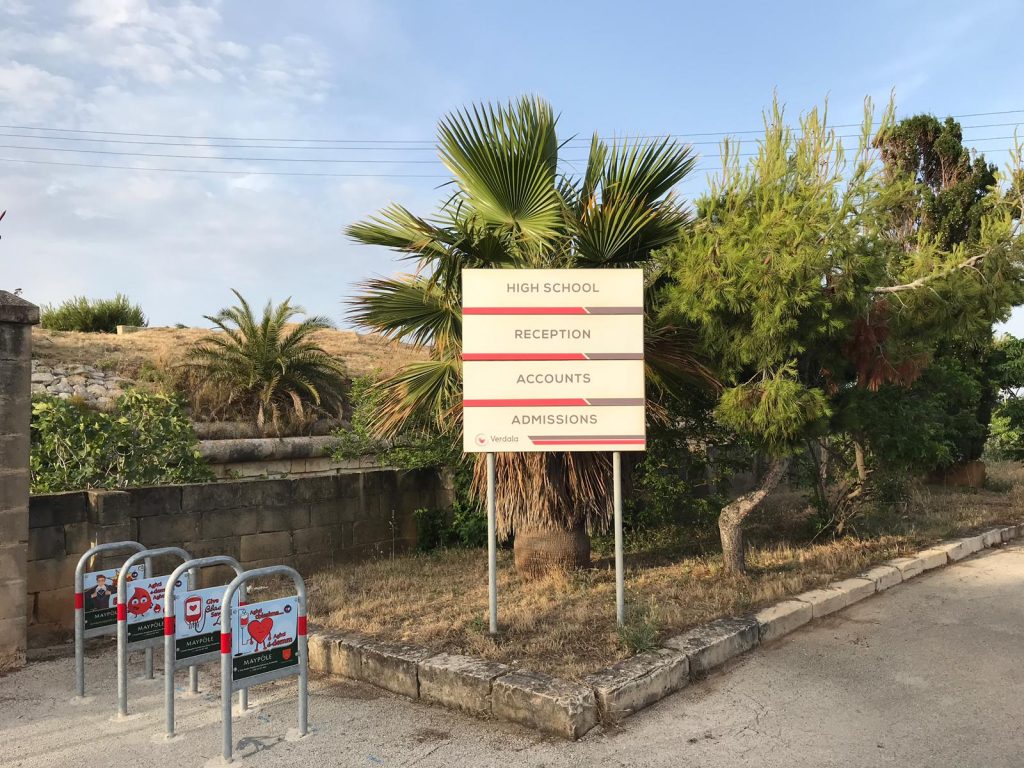
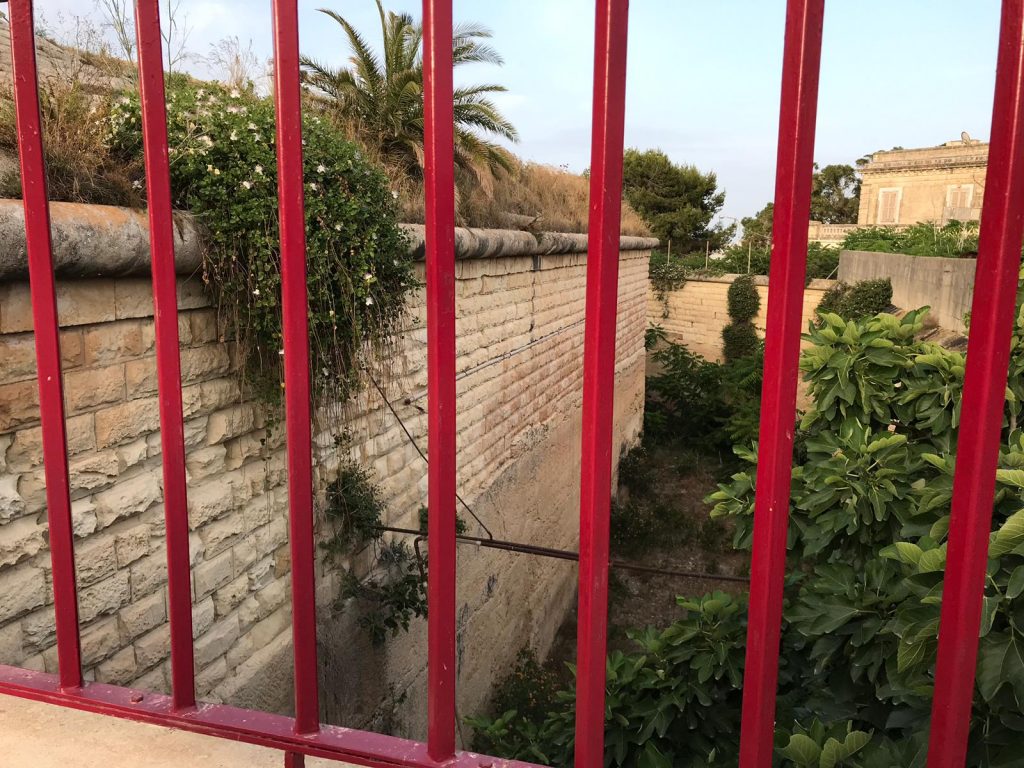
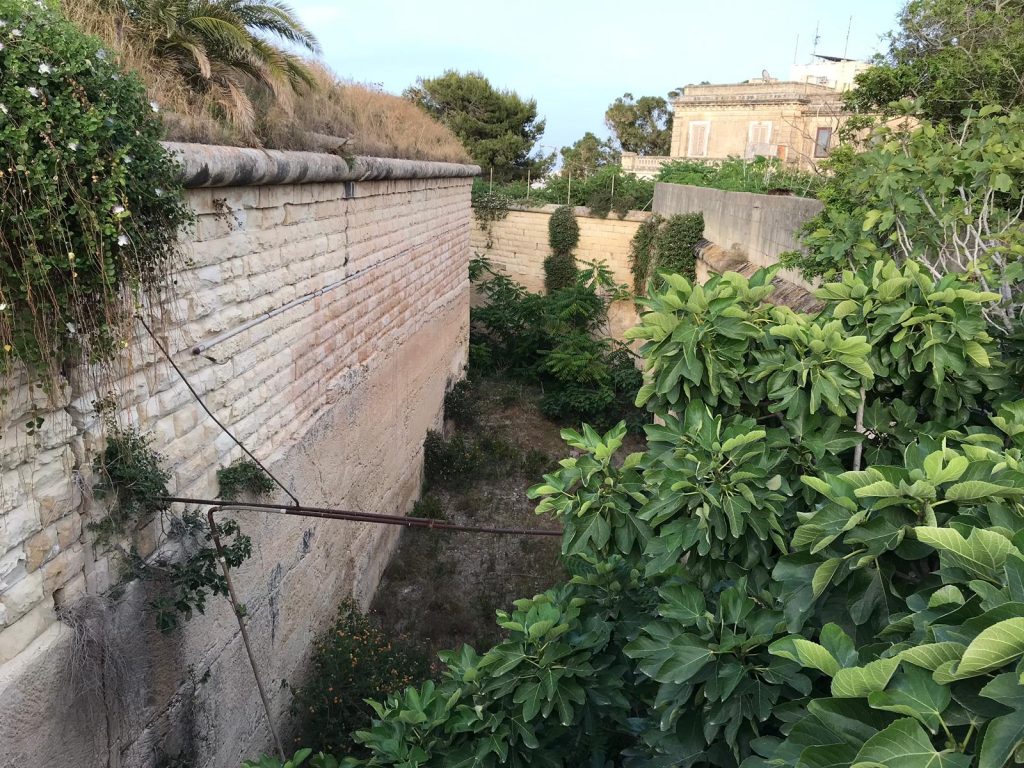
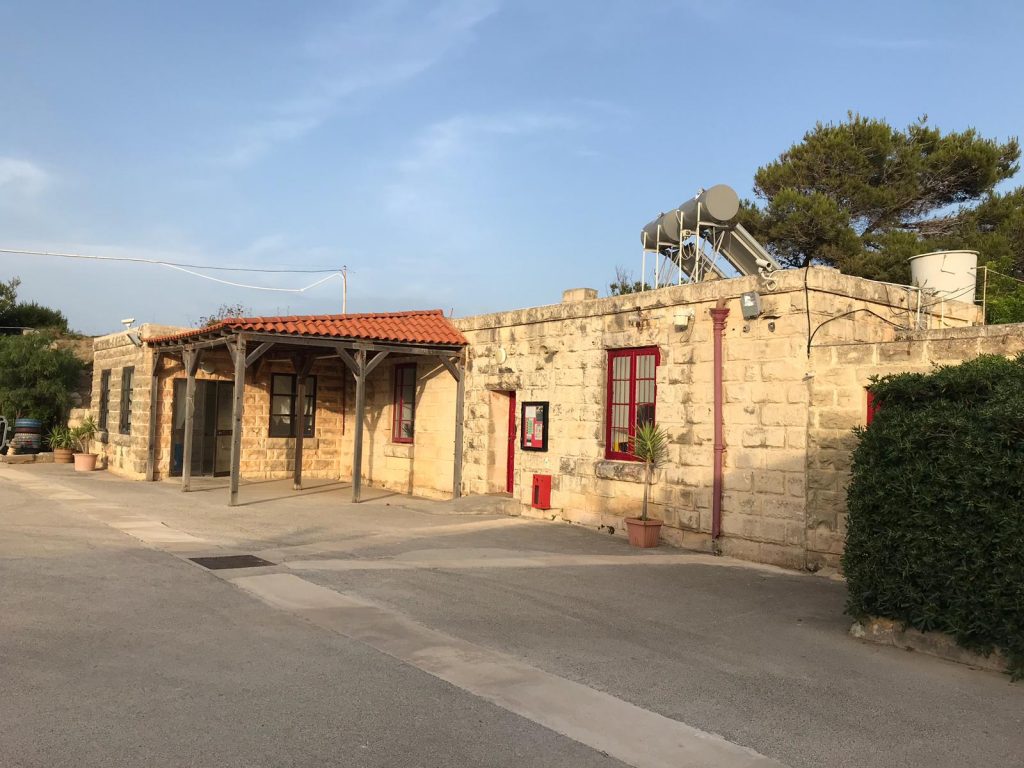
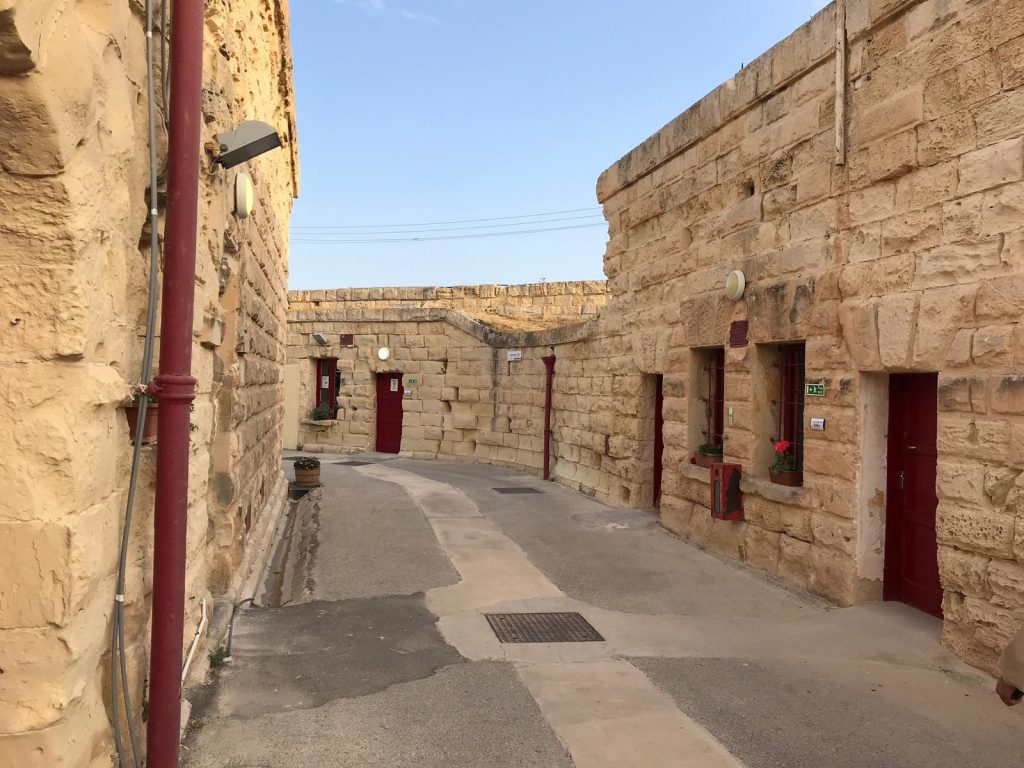
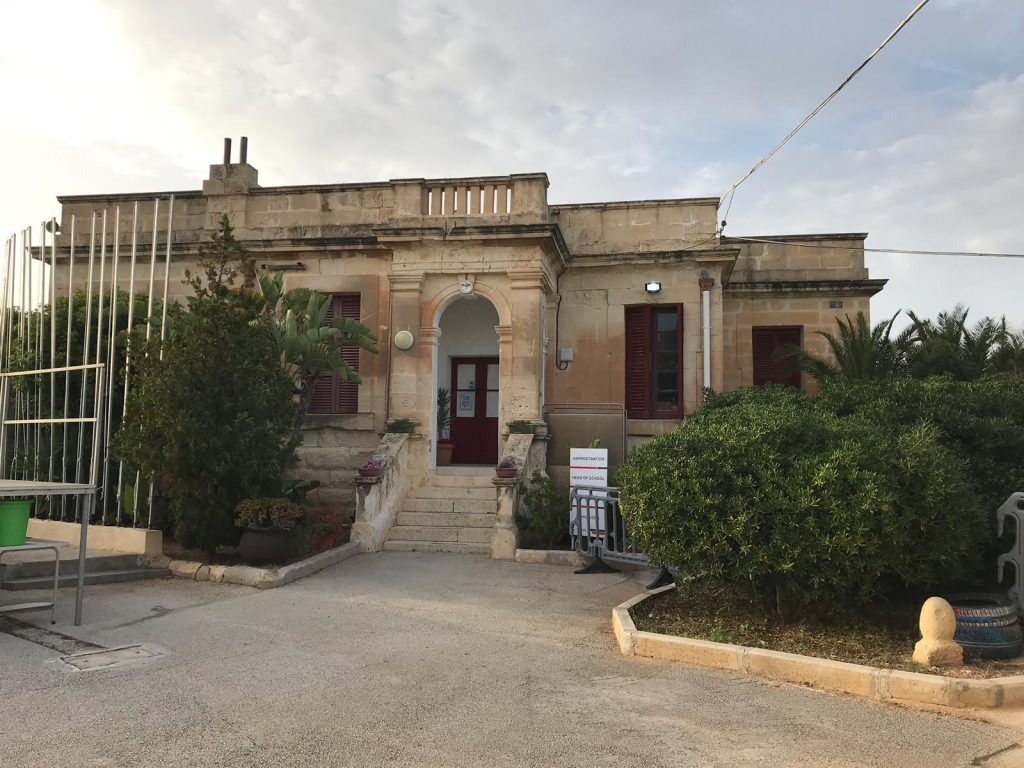
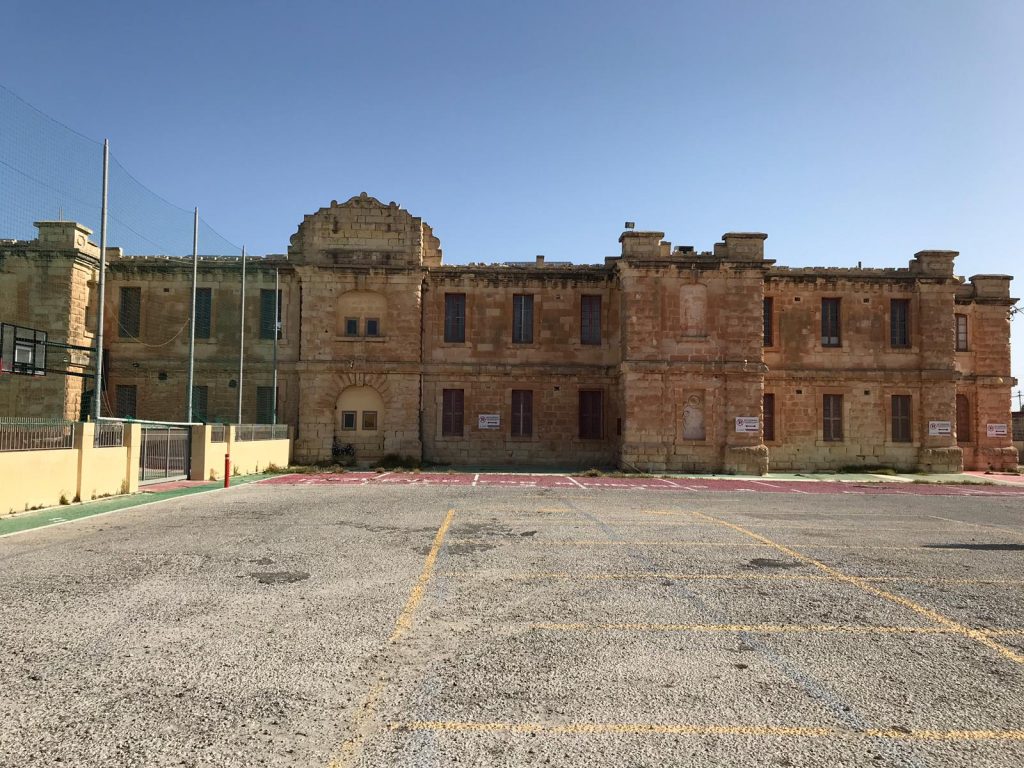

Fort Verdala, Cospicua
Fort Verdala in Cospicua is where it is suggested that Shaykh al-Hind Mawlānā Maḥmūd Ḥasan Deobandī and his colleagues were imprisoned. We did not visit this Fort. Fort Verdala, also known as Verdala Barracks, is a fortified barracks which was built by the British in the 1850s. It was used as a prisoner of war camp during both world wars. In World War I, it housed many German prisoners including Franz Joseph (Prince of Hohenzollern-Emden), Karl von Müller and Karl Dönitz.
Shaykh al-Islam Mawlānā Ḥusayn Aḥmad Madnī has not mentioned the name of the prison in his first hand account ‘Safarnāmah Asīre Malta’ nor in his autobiography ‘Naqshe Ḥayāt’. Mawlānā Muḥammad Miyā has also not mentioned it in ‘Asīrāne Malta’ (‘The Prisoners of Malta’ is its English translation). The local Muslim leaders Shaykh Muwaffaq, Shaykh Badr and their colleagues are not aware of the prison’s location. However, there are several indicators from ‘Safarnāmah Asīre Malta’ and other sources that indicate that Fort Verdala was where Shaykh al-Hind and his colleagues were incarcerated. The indicators are as follows:
- Fort Verdala was built by the British and was used as a prison during both World Wars, as mentioned above.
- Mawlānā Ḥusayn Aḥmad Madnī makes reference to various camps of prisoners including the St Clements Camp, also known as the German Camp (Safarnāmah Asīre Malta, p.127). As mentioned above, some notable German prisoners were imprisoned here. Mawlānā mentions that half of the 3000 prisoners were German (p.136).
- Mawlānā Ḥusayn Aḥmad Madnī describes the place of their internment as a large fort consisting of fortified walls with trenches and several buildings in open spaces. He adds that the mountain was dug and the fort was built therein (Safarnāmah,125). Fort Verdala fits this description.
- Mawlānā Ḥusayn Aḥmad Madnī mentions various camps that existed within the prison. He makes specific reference to the Verdala (note the name) Barracks and describes it as a two-storey building (Safarnāmah, 128). Mawlānā adds in its description that it was reserved for senior officers as it had much better facilities and that it is located in a spacious area. He adds that the building is grand in its structure, this is evident from the pictures available online and the satellite images on google maps.
- Mawlānā Ḥusayn Aḥmad Madnī mentions that they visited the Islamic Cemetery several times (see day 2 below). It is currently known as the Turkish Military Cemetery or the Ottoman Military Cemetery. This cemetery is located in Marsa, 5km from Fort Verdala. They would be escorted in a vehicle (Safarnāmah, 175).
- Mawlānā Ḥusayn Aḥmad Madnī describes their arrival at a Maltest port on 21 February 1917 (29 Rabīʿ al-Thānī 1335). Shaykh al-Hind was transported to the prison in a vehicle whereas the others were marched (Safarnāmah,125). Verdala Fort is within walking distance from Valletta Harbour, which was the military port of the Allies.
- Mawlānā Ḥusayn Aḥmad Madnī mentions in the tatimmah (epilogue) of the Safarnāmah (p.211) that the Ottoman Colonel Ashraf Beg (Esref Bey) was incarcerated in the same place as them and developed a close relationship with Shaykh al-Hind. Benjamin Fortna authored an English biography of Esref Bey titled, ‘The Circassian – A life of Esref Bey, Late Ottoman Insurgent and Special Agent’ and was given access to Esref’s personal papers. He writes that Esref was incarcerated at Fort Verdala in the Verdala Barracks and was also given a summerhouse in the Saint Clement’s Barracks (the Arab Camp). Mawlānā Ḥusayn Aḥmad Madnī has made reference to Verdala Barracks as mentioned above and also to Saint Clement Barracks, which Mawlānā mentions was also known as the Arab camp. The biography mentions that “sometimes he (Esref) would converse with a religious figure named Mevlana Mahmud Huseyni”, which is probably a reference to Shaykh al-Hind. This is perhaps the strongest evidence that Shaykh al-Hind and his group were incarcerated at Fort Verdala.
Upon my request, my dear colleague Mawlana Ismaeel Nakhuda, who has a deep interest in the biographies of Indian scholars and Indian history in general, kindly looked into this matter and concluded that Fort Verdala is almost certainly the location. I have attached his useful article as an appendix to this travelogue, it expounds on the aforementioned points.
Mawlānā Ḥusayn Aḥmad Madnī explains that they were initially housed in the Rogate Camp before being moved to the Arab Camp, also known as St Clement Barracks. He describes the Rogate Camp being located in the fort’s ditch, close the main gate of the fort. (Safarnāmah, p.127) These camps had tents for prisoners provided by the British, although some prisoners constructed wooden structures at their own expense (p.140). Shaykh al-Hind and his colleagues stayed in these tents in the Rogate camp for several months (p. 146). Mawlānā Ḥusayn Aḥmad also describes the Rogate Camp as being located in a trench, with all the tents in an open space, with no buildings (p. 155).
In relation to the Arab Camp (St Clement Barracks) where Shaykh al-Hind and his colleagues resided for the remainder of their time, Mawlānā Ḥusayn Aḥmad Madnī describes it as featuring buildings with space for a few tents, adding that they had to walk down many stairs before reaching it (p.128). He also provides a diagram of the room they were given here (p.157).

A visit to Fort Verdala is necessary to ascertain the precise location of these camps.
In short, it can be concluded with a degree of certainty that it was in Fort Verdala that Shaykh al-Hind and his colleagues were incarcerated.
The Prisoners of Malta
Mawlānā Ḥusayn Aḥmad Madnī has outlined in detail in ‘Safarnāmah Asīre Malta’ all the incidents and causes that led to their arrest and subsequent imprisonment. A summary is also found in his auto biography ‘Naqshe Ḥayāt’ (p. 652), which also provides a broader insight into the wider political upheaval across the Muslim world. The changing political landscape in Hejaz along with their refusal to sign a document against the Ottoman Caliphate (p.75) contributed to the suspicions of the British colonial rulers and their puppets. This was compounded by misinformation from opponents and enemies within.
It was thus on 24 Ṣafar 1335 (20 December 1916) that the luminaries formally entered British custody in Jeddah after they were arrested in Makkah by the Sharif of Makkah, Hussein bin Ali (d. 1350/1931), the great-great grandfather of the current King Abdulla II of Jordan. Their arrest occurred after Sharif had begun the Arab Revolt against the Ottoman Caliphate, supported by the British empire and claimed the title of King of Hejaz. The House of Saud later took control of Hejaz from Sharif and his family.
Three weeks later, the prisoners were dispatched to Suez by ship and from Suez transferred by train to Cairo and imprisoned in Giza jail for a few days. On 29 Rabīʿ al-Thānī 1335 (21 February 1917), the group arrived in Malta and spent the next three years here. Eventually, they left Malta on 2 Jumādā al-Thāniyah 1338 (22 February 1920) and were sent to Egypt where they remained in captivity first in Alexandria and thereafter in Suez. It was on 5 Ramaḍān 1338 (23 May 1920) they boarded the Steamer for India which arrived at Mumbai three weeks later on 20 Ramaḍān 1338 (8 June 1920).
The three-year incarceration in Malta and the seven-year absence from India did not prevent Shaykh al-Hind from partaking in activities that were anti-colonial and anti-establishment, despite being warned after arriving in Mumbai. A few months later, Shaykh al-Hind passed away on 18 Rabīʿ al-Awwal 1339 (30 November 1920). His legacy was continued by his disciple and student Mawlānā Ḥusayn Aḥmad Madnī who passed away thirty-eight years later in 1377 (1957).
Arabic couplets of Mufti Kifāyatullāh Dehlawī
Mufti Kifāyatullāh Dehlawī (d. 1372/1952) was a student of Shaykh al-Hind. His Urdu Fatwa collection Kifāyat al-Muftī is renown. He wrote the following couplets in Arabic when Shaykh al-Hind was in Malta, as cited in Nuzhat al-Khawāṭir (8:1334):
ألا يا مالطة طوبى وبشرى ، ثوى بك من محا آثار كفر
ولم تك قبله إلا خرابا ، خمولا غير معروف بخير
فلما حلها عادت رياضا ، منضرة من التقوى وذكر
مكللة بأزهار المزايا ، وأزهار المزايا خير زهر
ألا يا مالطة كوني سلاما ، على محمودنا الراضي بقدر
إمام الخلق قدوتهم جميعا ، له كرم إلى الآفاق يسري
جنيد العصر سري الزمان ، غيوث فيوضه تهمي وتجري
فريد في خلائقه العذاب ، وحيد في التقى من غير فخر
أشد الناس أمثلهم بلاء ، فيا شمس الهدى يا طود صبر
ذكرنا يوسف الصديق لما ، أسرت بغير استحقاق أسر
لحر البين في صدر الكئيب ، تفيض دموعه حمراً كجمر
سينزلك العزيز محل عز ، ويضرك النصير أعز نصر
سيكفيك الإله فأنت مرء ، كفاك الله قدما كل شر
Fiqh lessons from ‘Safarnāmah Asīre Malta’
Whilst reading Mawlānā Ḥusayn Aḥmad Madnī’s account of their incarceration in Malta, several jurisprudential points and interesting facts caught my attention. I thought it useful to mention some of these here for the benefit of readers:
- Shaykh al-Hind had already distributed his inheritance to his heirs in India prior to his journey to Hejaz and incarceration (p.38). (There is a difference of opinion in relation to whether the rules of inheritance or gifts will apply, as outlined on the following link: https://islamicportal.co.uk/distribution-of-wealth-before-demise/).
- Mawlānā Ḥusayn Aḥmad Madnī memorised the entire Quran during his stay in Malta and also recited it to Shaykh al-Hind in Ramaḍān in Nawāfil Ṣalāh after the Tarāwīḥ Ṣalāh (p. 194). The other prisoners were accustomed to the recitation of the final ten chapters in Tarāwīḥ Ṣalāh, so Shaykh al-Hind did not persist. In fact, during the siege of Taif prior to their arrest, Shaykh al-Hind and his colleagues performed Tarāwīḥ Ṣalāh in this manner (p.68).
- Whilst in the blessed city of Madīnah, Shaykh al-Hind and Mawlānā Khalīl Aḥmad Sahāranpūrī (d. 1346/1927) granted the local scholars and students ijāzah in ḥadīth following the recital of al-Awāʾil al-Sunbuliyyah. Mawlānā Ḥusayn Aḥmad Madnī describes this a practice of earlier saints (p.49). This clearly demonstrates that granting ijāzah of ḥadīth in this manner and reciting the Awāʾil was a practice of our elders.
- Shaykh al-Hind and colleagues would not eat the meat that was provided by the Prison authorities as the source was unknown. Mawlānā Ḥusayn Aḥmad observes that many prisoners would consume the meat, with some justifying it on grounds of necessity. Mawlānā refutes this. What is interesting is that Shaykh al-Hind permitted them to sell the ḥarām meat to non-Muslims based on the permissibility of transactions with non-Muslims in Dār al-Ḥarb (the land of war). However, such was the due diligence of Shaykh al-Hind that he advised Mawlānā Ḥusayn Aḥmad to consult a fiqh text, and he consulted a commentary of Kanz al-Daqāʾiq which they had with them (p.148-150). Whether this ruling applies to Muslims living safely as minorities in non-Muslim countries is a separate issue, beyond the scope of this article.
- Physical torture existed in the era of Sharif of Makkah in the prisons of the blessed city of Makkah (p.84). Unfortunately, the same is true today in both Makkah and Madīnah.
- Despite repeated attempts, Shaykh al-Hind refused to sign the document criticising the Ottoman rule (p.73). This despite the fact that India was not under Ottoman control.
- Shaykh al-Hind granted permission to some Turkish Officers to continue singing and dancing to demonstrate to the British soldiers that they are not struck with any grief or sadness (p.120).
History repeats itself
It is worth noting that the Ottoman Mufti and judge Muḥammad ibn ʿAbd al-Ḥalīm (d. 1093/1682) was captured in the sea by the French and incarcerated in Malta for nearly four years. This has been cited by ʿAllāmah Muḥibbī (d. 1111/1699) in Khulāṣat al-Athar (3/483) in his biographical entry.
Maghrib Ṣalāh and short programme
We leave Fort Pembroke and head to a local muṣalla, Masjid Ar-Rahmah in Birkirkara where we perform Maghrib Ṣalāh. After Ṣalāh, Mufti Ahmad Khanpuri delivers a short speech in Urdu, I translate into Arabic and English. We return to Al Fateh Mosque in Floriana where we are staying, and on route Mawlana Hanif and I collect some food from a local takeaway. There are several Halal food outlets in Malta.
Profound reflection of Shaykh al-Hind
As we rest for the evening in Al Fateh Mosque, we reflect on the sacrifices and struggles of Shaykh al-Hind and his colleagues. When Shaykh al-Hind returned to Deoband, he addressed a large group of scholars and students. He explained that whilst in prison, he had pondered upon the cause of the demise of the Ummah both spiritually and in worldly terms and concluded that there are two causes. The entire congregation was listening extremely attentively to their mentor who had spent his entire life teaching the Quran and Sunnah and strived for freedom. He explained that the first cause is the Muslims abandoning the Quran and emphasised on establishing classes and lessons to promote the recitation of the Quran and spread its meanings. The second cause is the internal disputes and quarrels among Muslims.
Day 2 – Friday 7 June 2019
Tour of Malta island
The morning begins with a tour of the Malta island in the car. We visit some of the key attractions.

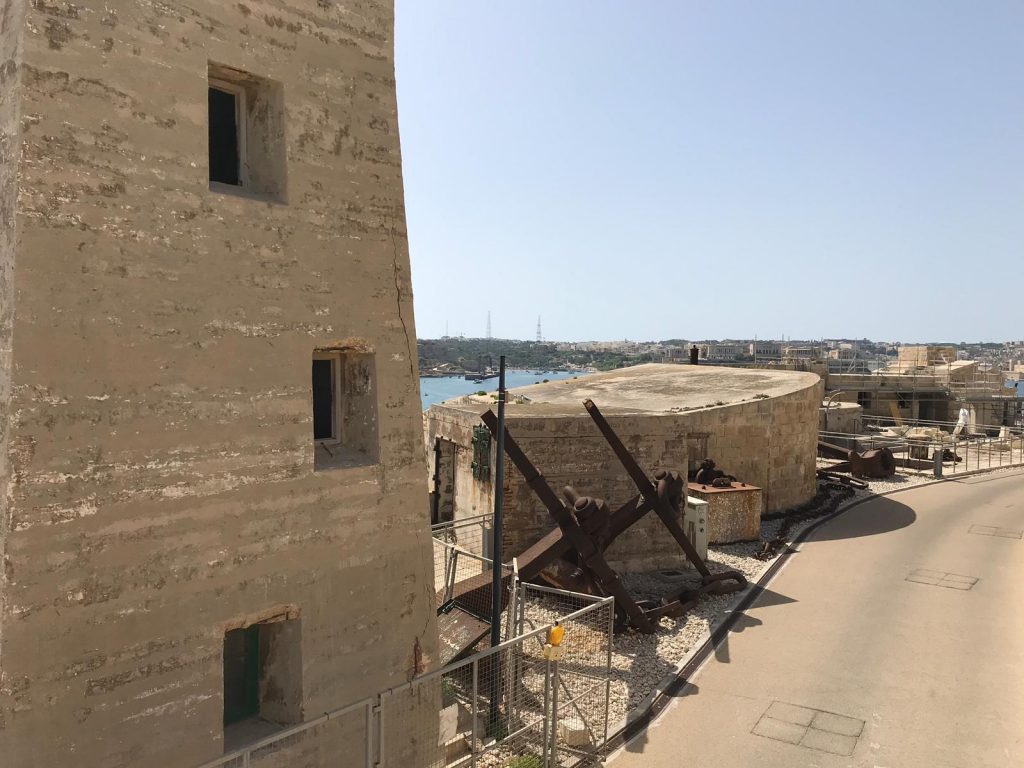

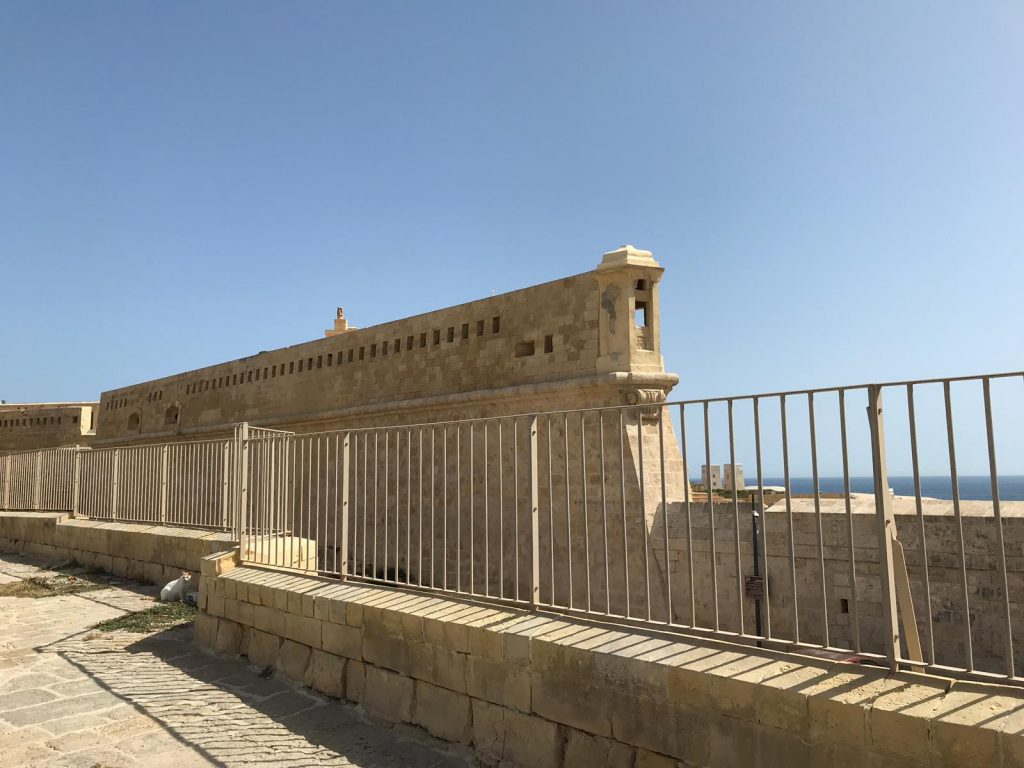
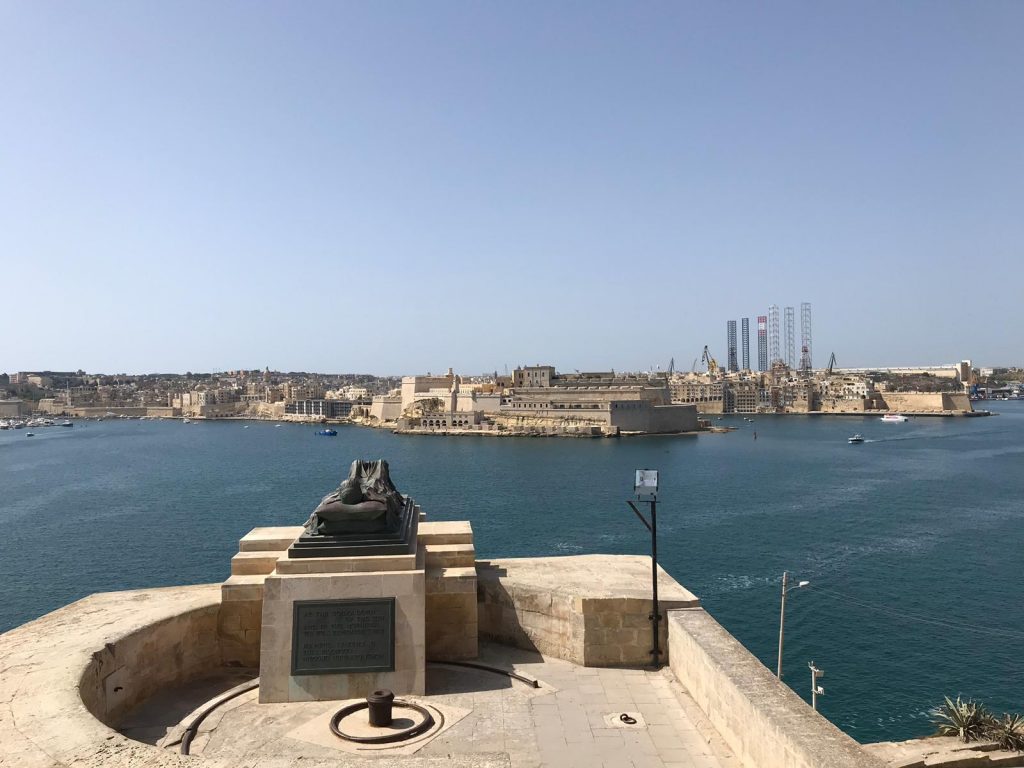
The coastline is very scenic. The weather is also perfect at this time of the year, 25 to 30 degrees Celsius. At night, the temperature drops and there is a cool breeze, which is perfect for us Britons.
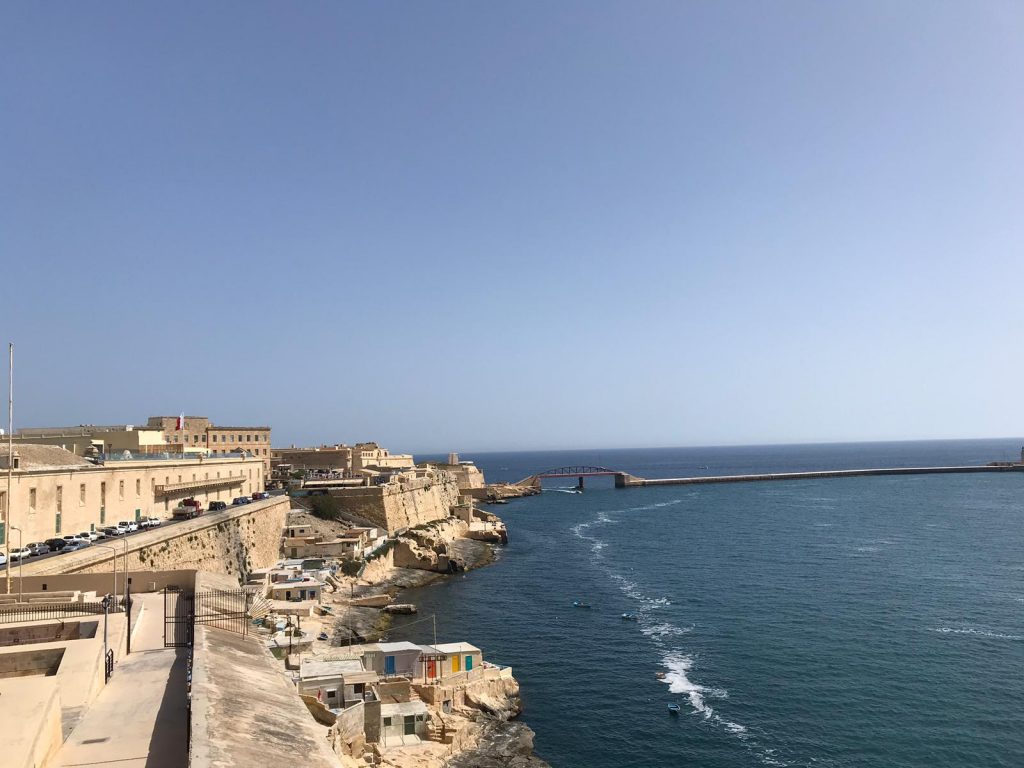
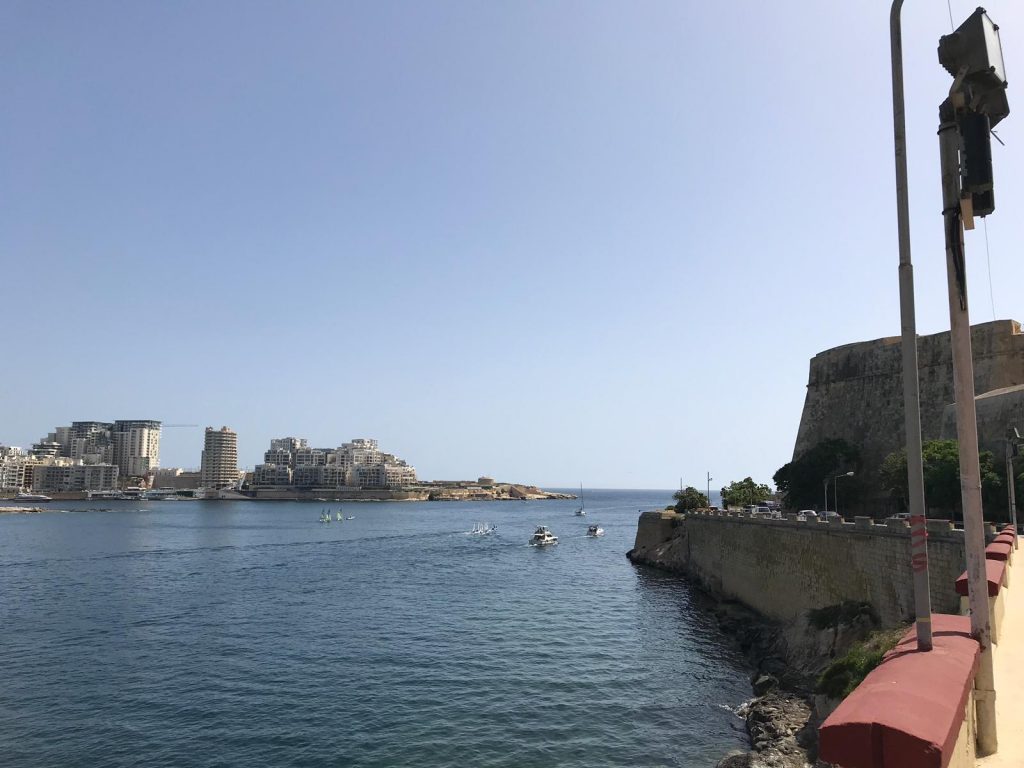
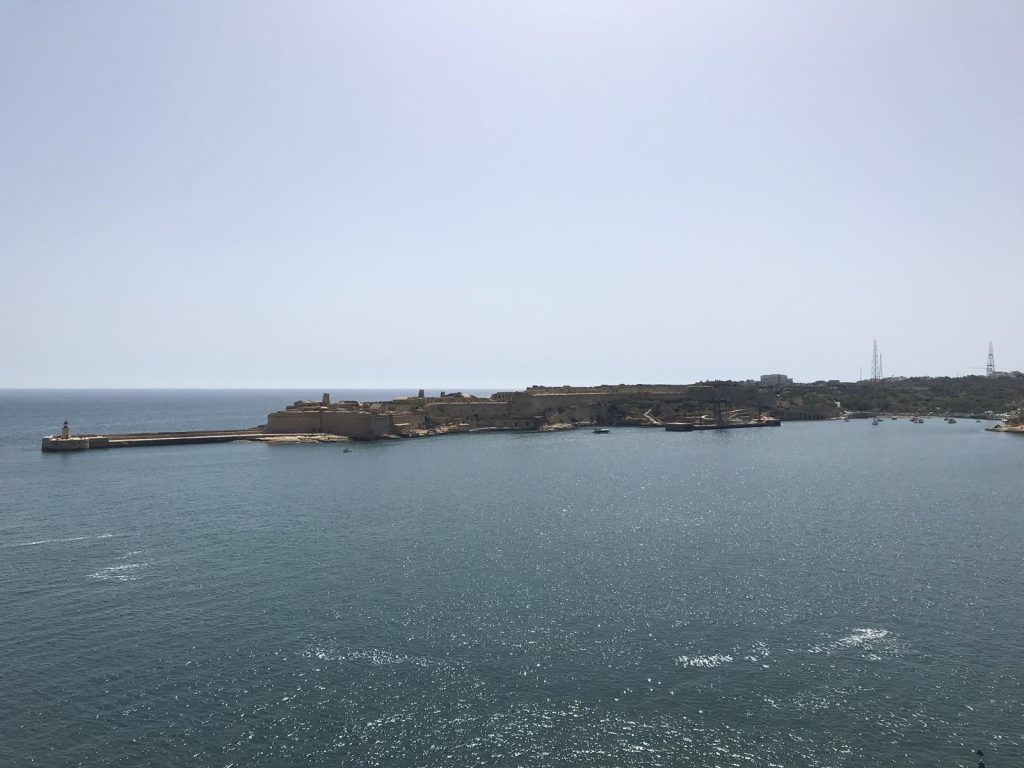
However, Mawlānā Ḥusayn Aḥmad Madnī mentions that the climate proved difficult for them during the nights particularly in the Rogate Camp where they resided in tents (p.154, 155). We can appreciate this, particularly in the winter months as temperatures can drop to 8 degrees Celsius and even less. Mawlānā mentions that taking the head out of the tent in the morning for Fajr Ṣalāh was akin to a severe torment, as it would be very cold.
Turkish Military Cemetery
Next, we visit the Turkish Military Cemetery in Marsa, also known as the Ottoman Military Cemetery. The cemetery was built in 1290 (1874) as marked above the door of the graveyard.
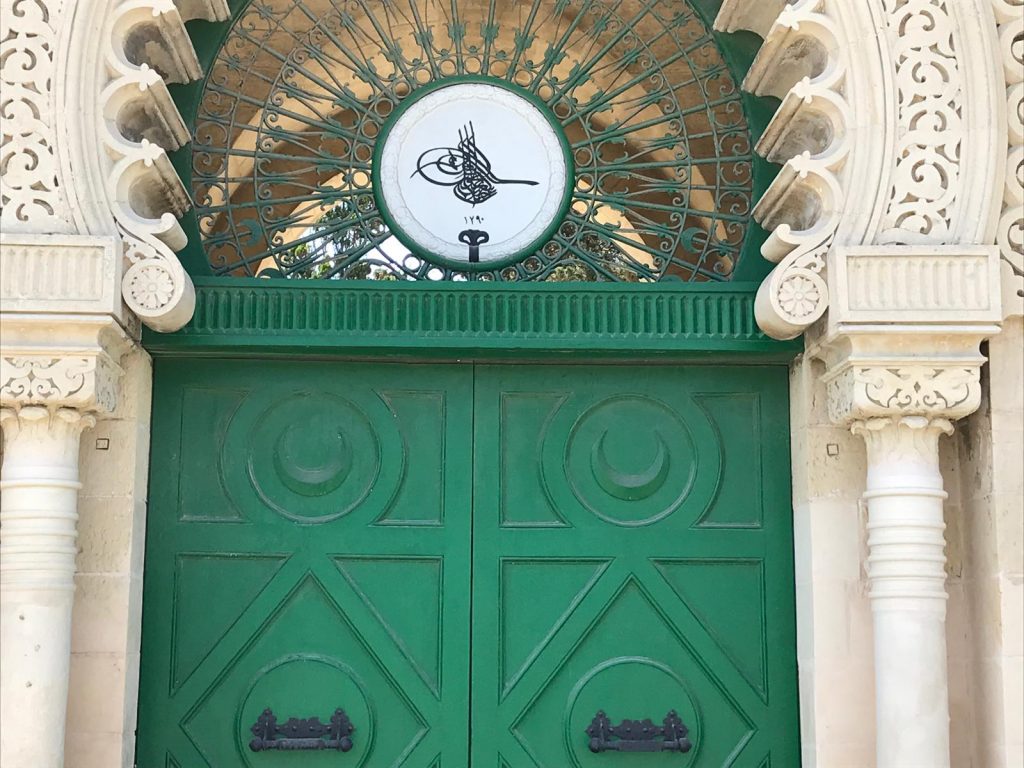
The Ottoman Sultan Abdulaziz commissioned it to replace an earlier Muslim cemetery. The Turkish government maintains it today and permission is required from the Turkish Embassy to visit it, although sometimes the staff permit entry, we are told. Until the construction of the Mariam Al-Batool Mosque in Paola, it was also used as the prayer facility by the Muslims. The cemetery was also referred to Mahomedan Cemetery and the Martyrs Cemetery, because it is home to the graves of some Turkish prisoners of war.
Shaykh al-Hind and his colleagues visited this graveyard on several occasions. Mawlānā Ḥusayn Aḥmad Madnī provides a diagram of the graveyard in his Safarnāmah Asīre Malta (p. 176) and makes reference to Sultan Abdulaziz (p. 175). It was here that an Ottoman prisoner Ali Beg was bathed and buried after being executed, he had requested Shaykh al-Hind to be present during his execution and lead his Janāzah Ṣalāh (p. 173). Subsequently, Shaykh al-Hind and his colleagues would visit his grave whenever they visited the graveyard (p.177).
On 9 Dhū al-Qaʿdah 1336 (16 August 1918), Ḥakīm Nuṣrat Ḥusayn, a colleague of Shaykh al-Hind passed away, he was also buried in this cemetery. His Janāzah Ṣalāh was led by Shaykh al-Hind. Colonel Ashraf Beg (Esref Bey) paid for the transportation and gravestone costs whilst the other burial costs were paid for by Shaykh al-Hind and his colleagues (p. 201-2).
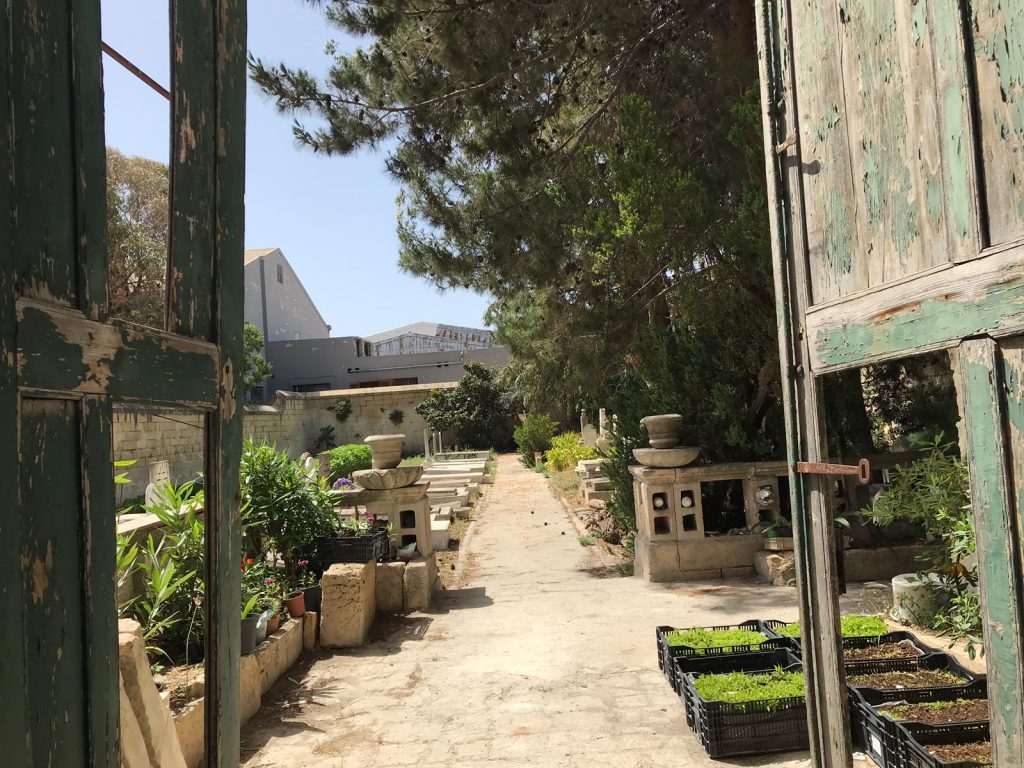
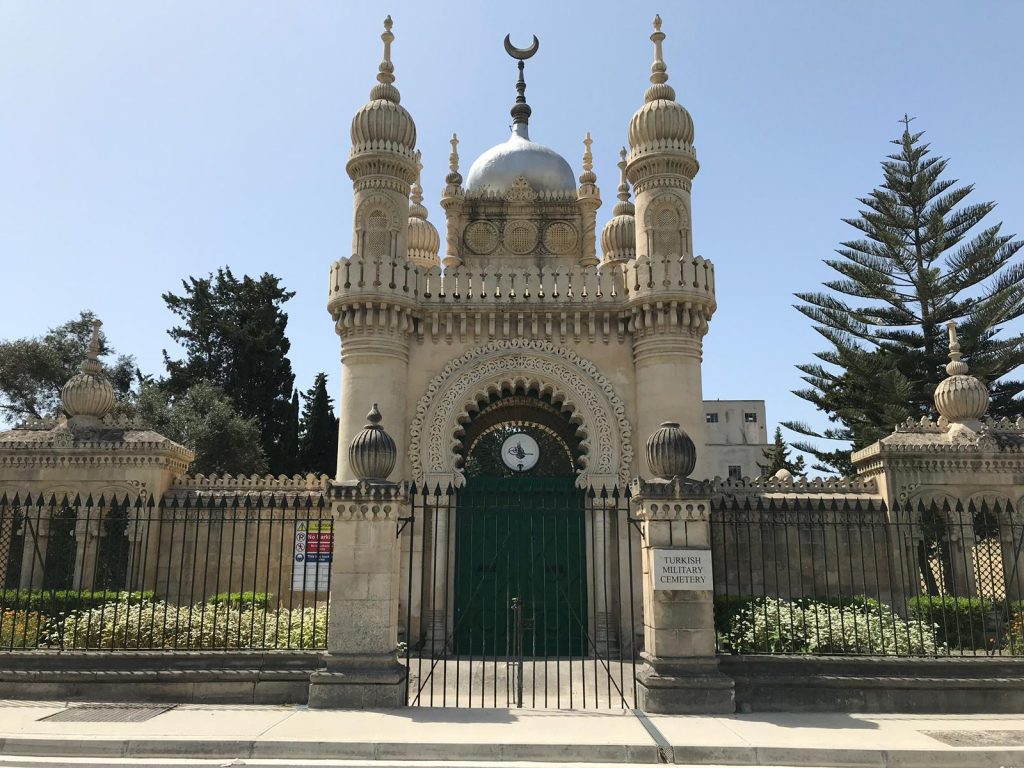
Unfortunately, today is a public holiday in Malta, and we are unable to enter the graveyard. We offer our Salāms and prayers from the outside. I had personally wanted to observe the grave of Ḥakīm Nuṣrat Ḥusayn and the gravestone mentioned by Mawlānā Ḥusayn Aḥmad Madnī (p. 201), containing the following text:
هذا قبر الحكيم السيد نصرت حسين من أهل كورا جهان آباد الهند، أسر بمكة مع حضرة العلامة الشيخ محمود حسن، صدر المدرسين بكلية ديوبند في الحرب العمومي، وتوفي أسيرا في تاسع ذي القعدة سنة ١٣٣٧ هجرة النبي سيدنا محمد صلى الله عليه وسلم، رحمه الله رحمة واسعة، وله الفاتحة
We learn later that today is Sette Giugno (Italian for 7 June), a Maltese national holiday which is celebrated annually on 7 June. It commemorates events which occurred on this day in 1919 when British troops fired into a crowd and killed four people, following a series of riots by the local people.
Jumuʿah Ṣalāh
We return to the Al Fateh Mosque in Floriana after midday. People have started to gather for Jumuʿah Salah. To our amazement, some 1200 people have gathered well in advance of the Jumuʿah Salah time of 1.30pm. Yesterday, the number of attendees in Ṣalāh were in the tens and we did not envisage this many people to attend Friday Ṣalāh. People are sitting in the courtyard outside in the heat due to the overspill. Shortly after 1pm, Mufti Ahmed Khanpuri Sahib starts to deliver his lecture in Urdu. There is pin drop silence as the whole congregation is fully focused, although 99% of the attendees do not understand Urdu. My colleague Mawlana Rafiq Sufi translates into English whilst I translate into Arabic. The main ethnicities are Arab and African, English is required for the Africans and other non-Arabs.
As the pre-Jumuʿah Ṣalāh speech concludes, Shaykh Badr ascends the pulpit, which is taken outside into the courtyard, and delivers the Khuṭbāh in Arabic and English. An eloquent sermon is delivered. Until this point, we were unaware of Shaykh Badr’s scholarly credentials because of his humility. We had assumed that he is merely an interpreter and an assistant of Shaykh Muwaffaq, who in the meanwhile is leading Jumuʿah Salah at a local prison. Shaykh Muwaffaq explains later that there are 120 Muslim prisoners, of which 60 perform Jumuʿah Ṣalāh behind him as there are various divisions and it is not practical for all the Muslims prisoners to perform Ṣalāh together. Considering the size of the community and the limited resources, this is a commendable achievement that arrangements exist for Jumuʿah Ṣalāh in the prison.
After Jumuʿah Ṣalāh, many people come to greet us. A short while later, our hosts honour us with a delicious Syrian cuisine in the Masjid.
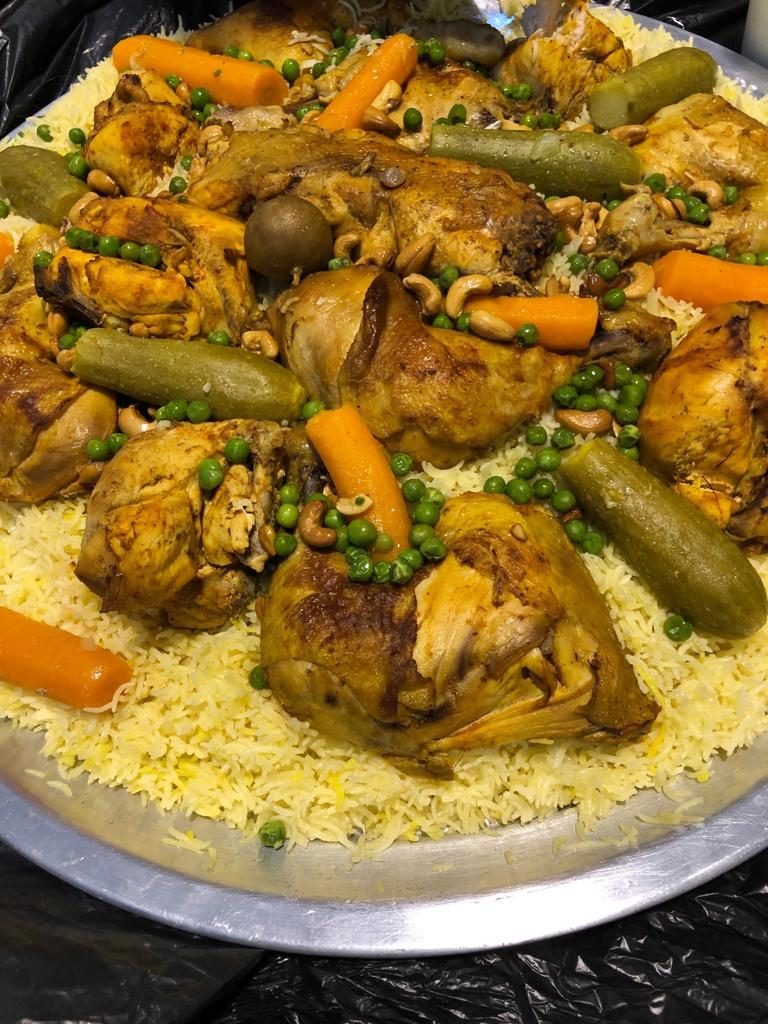
Gozo Island
At 3pm, we head towards Cirkewwa, in the north of Malta, which has a ferry terminal that offers frequent crossings to Gozo island. The journey from Floriana to Cirkewwa takes thirty minutes whilst the ferry crossing takes twenty-five minutes. The scenery is breath taking.
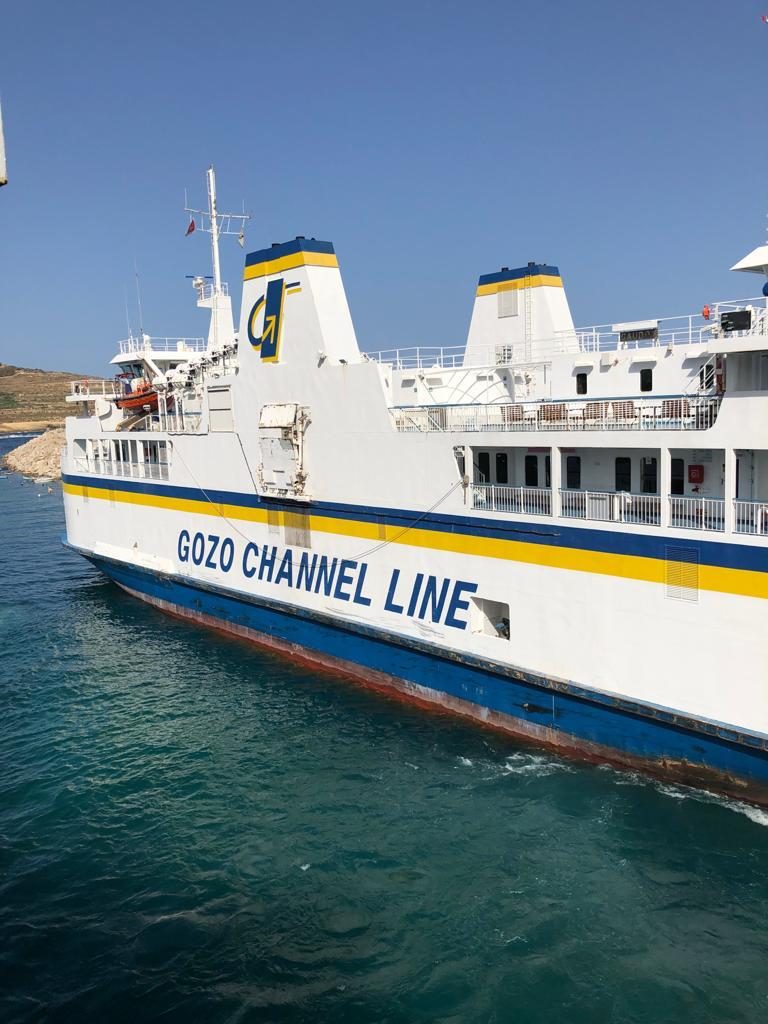
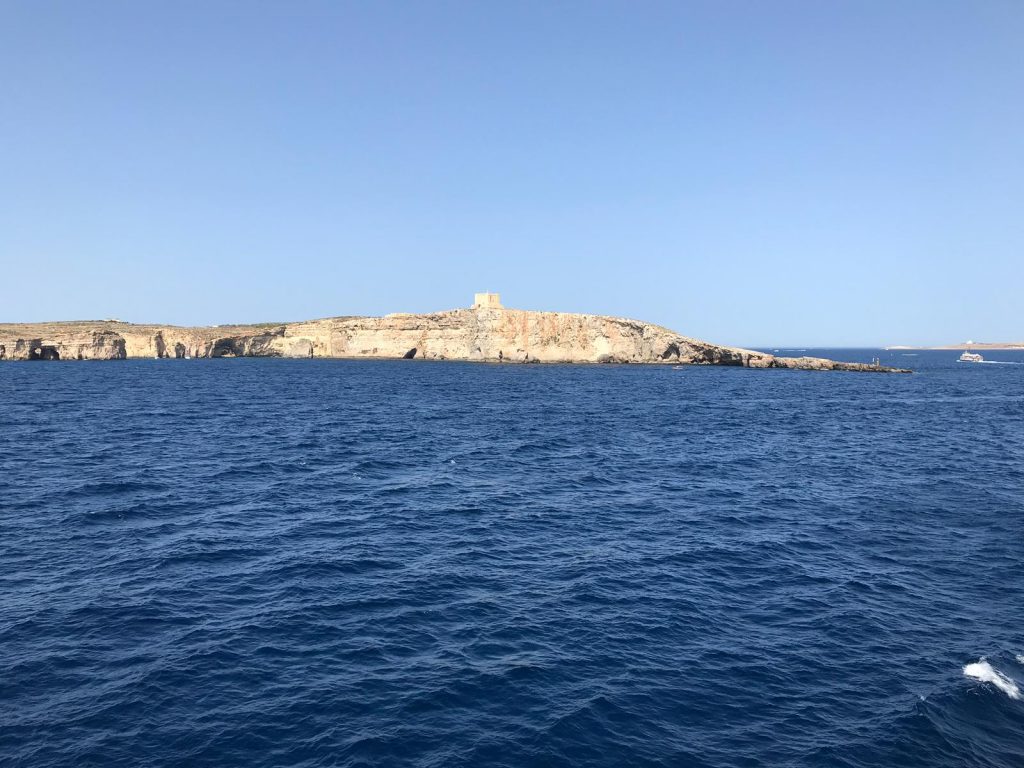
Our first stop on the island is a small muṣalla where we perform ʿAṣr Ṣalāh. This is the only prayer facility for Muslims on this island. Shaykh Badr informs us that there are no Muslims who permanently reside on this island. However, there are some Muslims who work here.
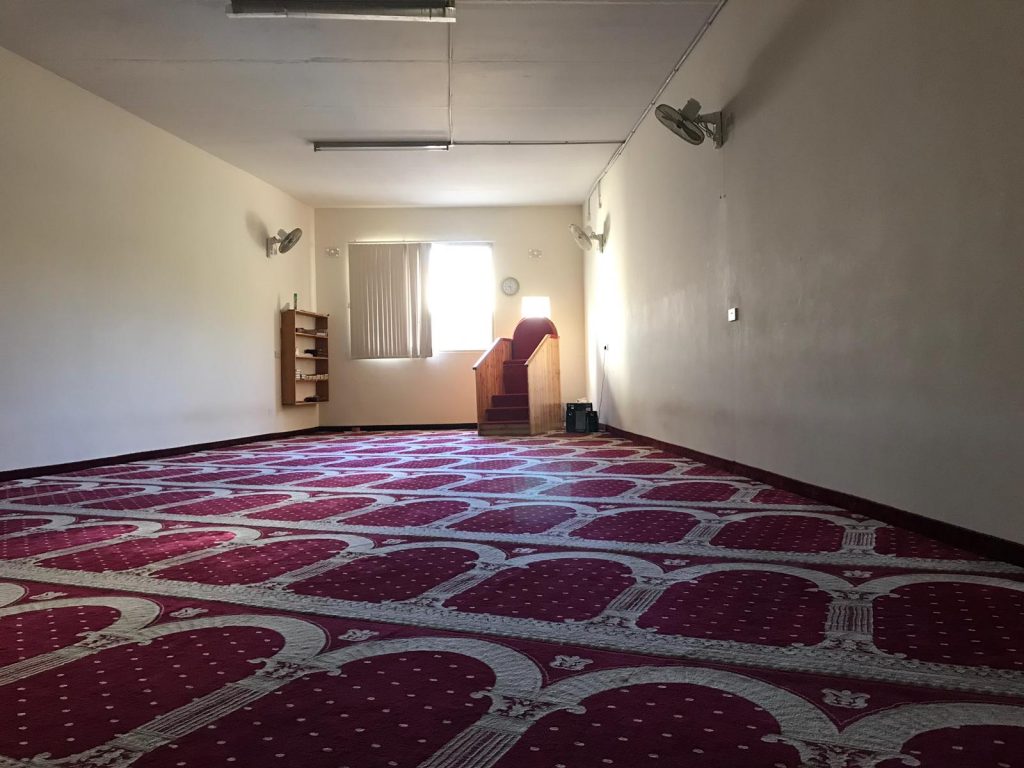
Cittadella (Citadel)
Gozo island is known for its Neolithic Ġgantija Temple ruins, rural hiking paths, beaches and scuba-diving sites. The island is also famous for the Cittadella, a small fortified town situated over the town of Victoria (also known as Rabat). The town is a UNESCO heritage site.
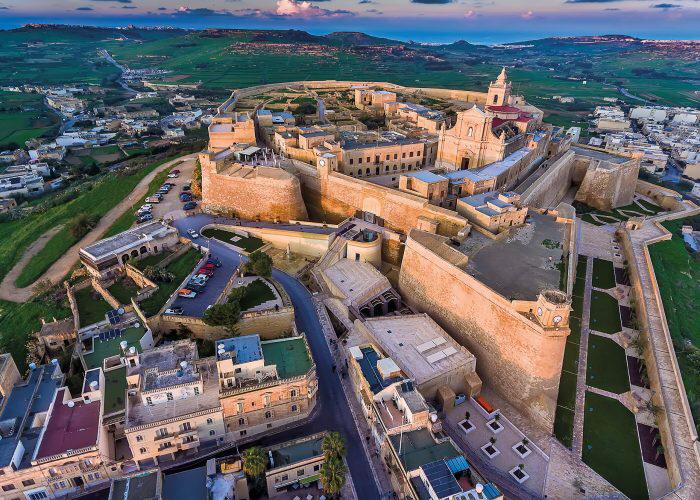
The UNESCO website states, “The Cittadella is in the centre of Gozo, Malta’s sister island. The small fortified town is situated on a promontory sited over the town of Victoria (also known as Rabat). This vantage point was obviously chosen because it was a naturally fortified hill which dominated the surrounding countryside and provided visual control of the coastal areas. The geological and geomorphological characteristics were ideal to support ancient settlements and provide a foundation for town development. The Cittadella was referred to as Gaulcouis Civitas (possible after the Roman settlement) before the arrival of the Knights of the Order of St. John.”
The Old Prison
The Old Prison is located in the Cittadella, adjacent to the Courts of Justice to which it was originally connected. It has a lot of interesting things to see such as original graffiti from inmates depicting crosses, ships and the cross of the Knights. This prison was used between the mid-16th century until the beginning of the 20th century and is today divided into two sections, the entrance hall and the individual cells.
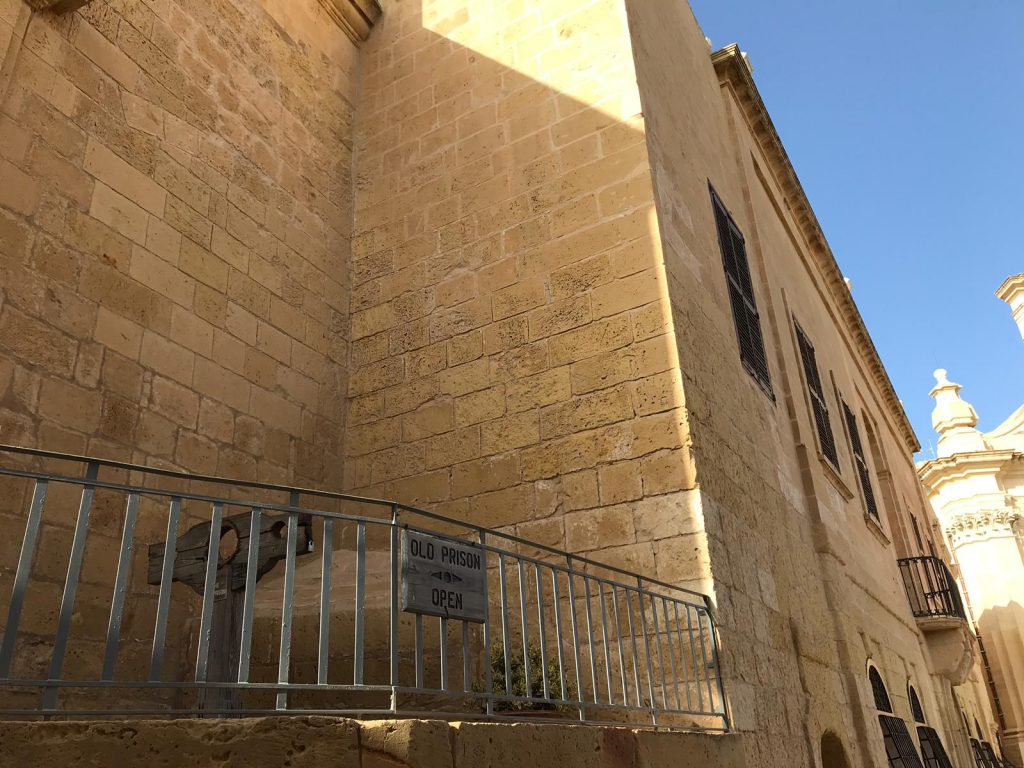
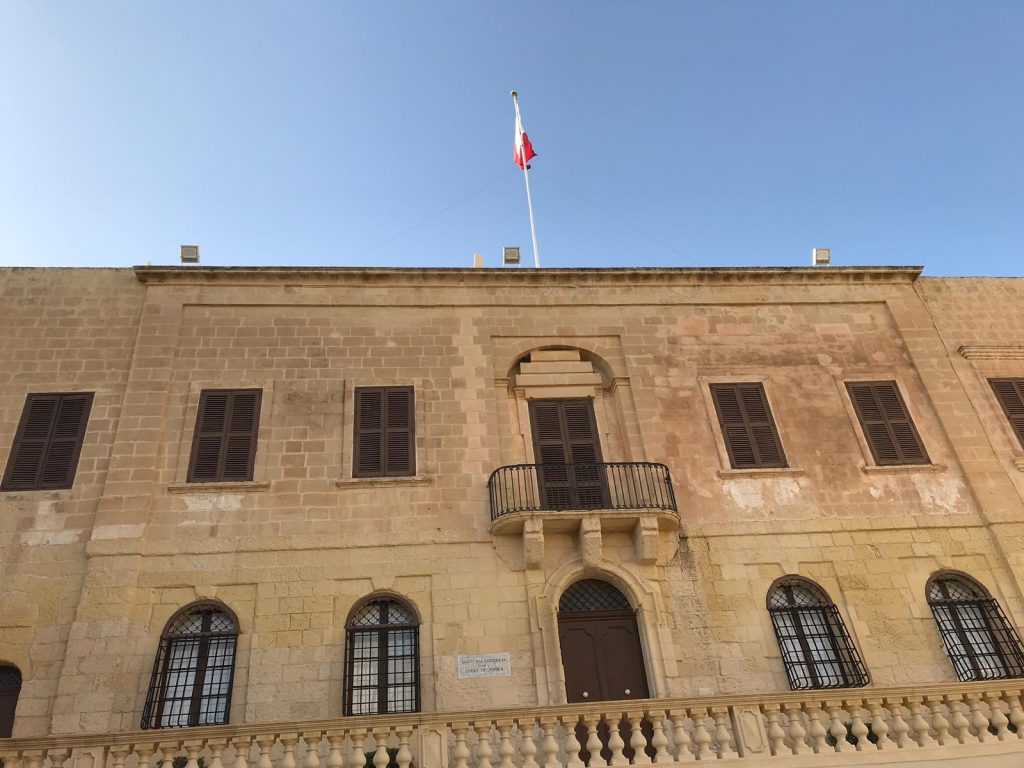
We are visiting Cittadella primarily because of this prison. Some people assume that this is the prison where Shaykh al-Hind and his colleagues were incarcerated. This appears to be incorrect for a number of reasons:
- There is no mention of Gozo island in the Safarnāmah of Mawlana Mawlānā Ḥusayn Aḥmad Madnī.
- The description of the prison detailed by Mawlānā does not match the Old Prison or the Cittadella in any way. If this was indeed the prison, Mawlānā would have mentioned the Cittadella and the various buildings therein; the Cathedral, the Courts of Justice and other buildings.
- The prison does not appear to be large enough to house 3,000 prisoners, a number mentioned by Mawlānā Ḥusayn Aḥmad (p.136) and there does not appear to be any open spaces for the various camps and prisoners’ tents.
- Apart from Shaykh al-Hind, the rest of the group were marched to the Prison on foot as mentioned above. The Cittadella is located on a hill and it would not have been an easy walk to the top. This would have been mentioned by Mawlānā.
- Mawlānā Ḥusayn Aḥmad Madnī has mentioned their visits to the Turkish Military Cemetery. This Cemetery is located on the main Malta island. There is no such Cemetery on Gozo island and Mawlānā has made no reference to undertaking any journey by sea during their three-year incarceration in Malta. He only makes mention of being escorted in a car (p.175), as already mentioned. Further, Mawlānā has made specific reference to Sultan Abdulaziz’s role in the construction of the Cemetery. There is only one such cemetery constructed by the Sultan in Malta.
- Benjamin Fortna has made no reference to this in his biography of Ashraf Beg (Esref Bey).
We are unable to visit the inside of the Prison as it is past 5pm. The last admission time is 4.30pm. However, we visit the prison and neighbouring buildings from the outside as the historic fortified town is open.

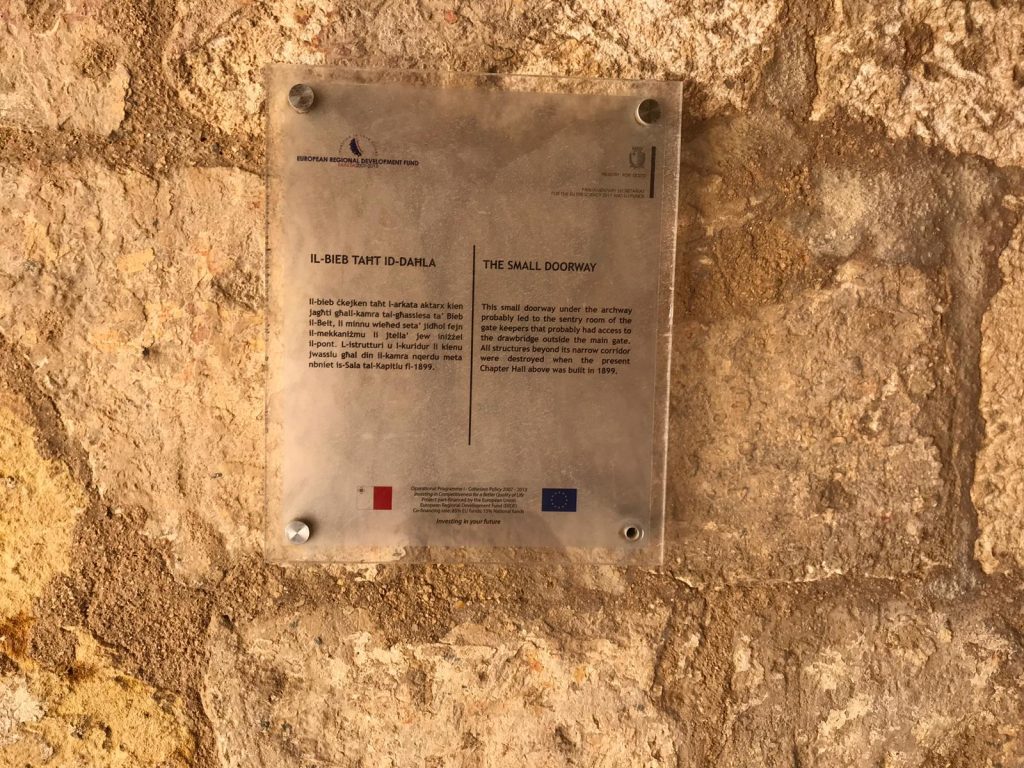
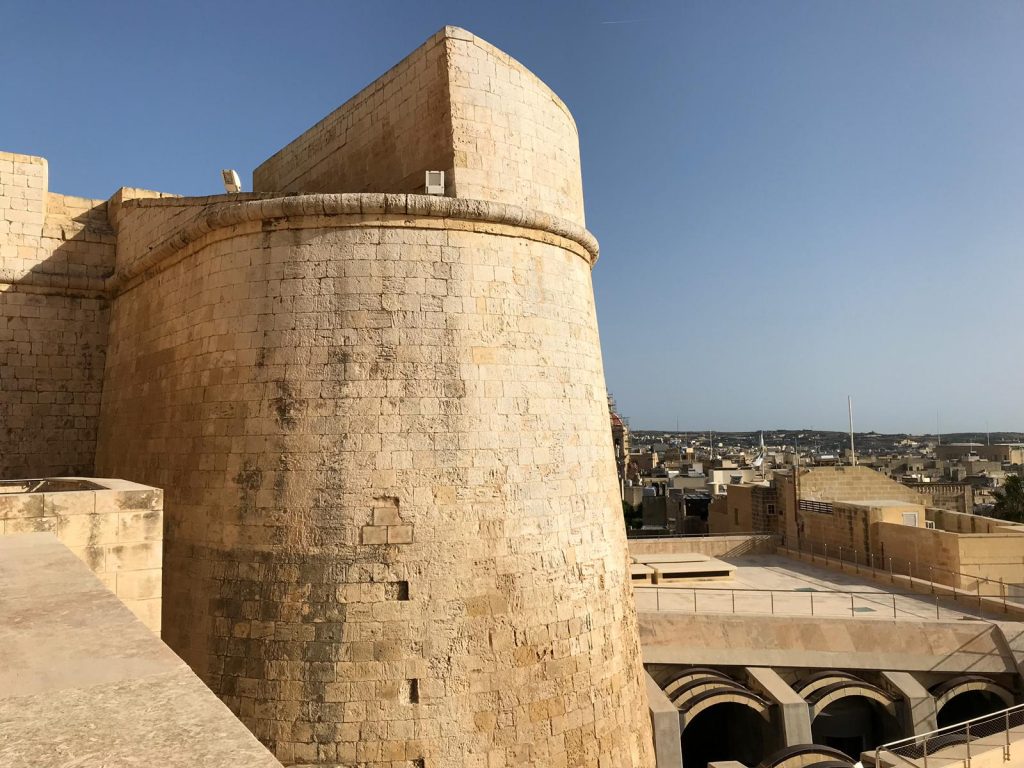

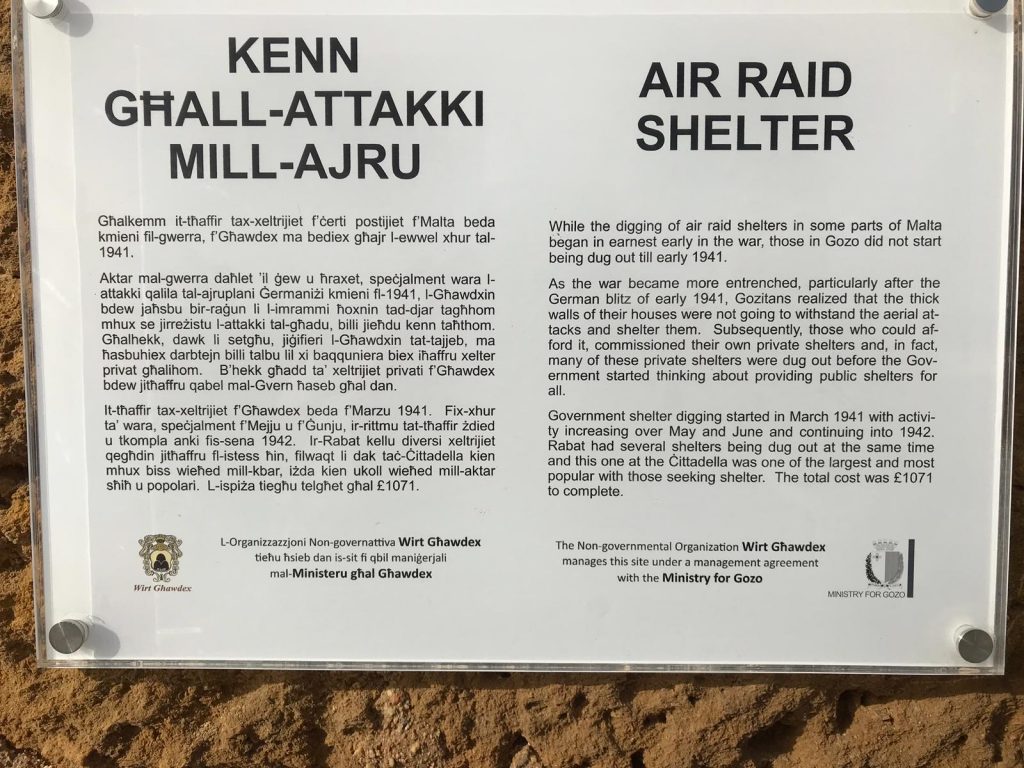
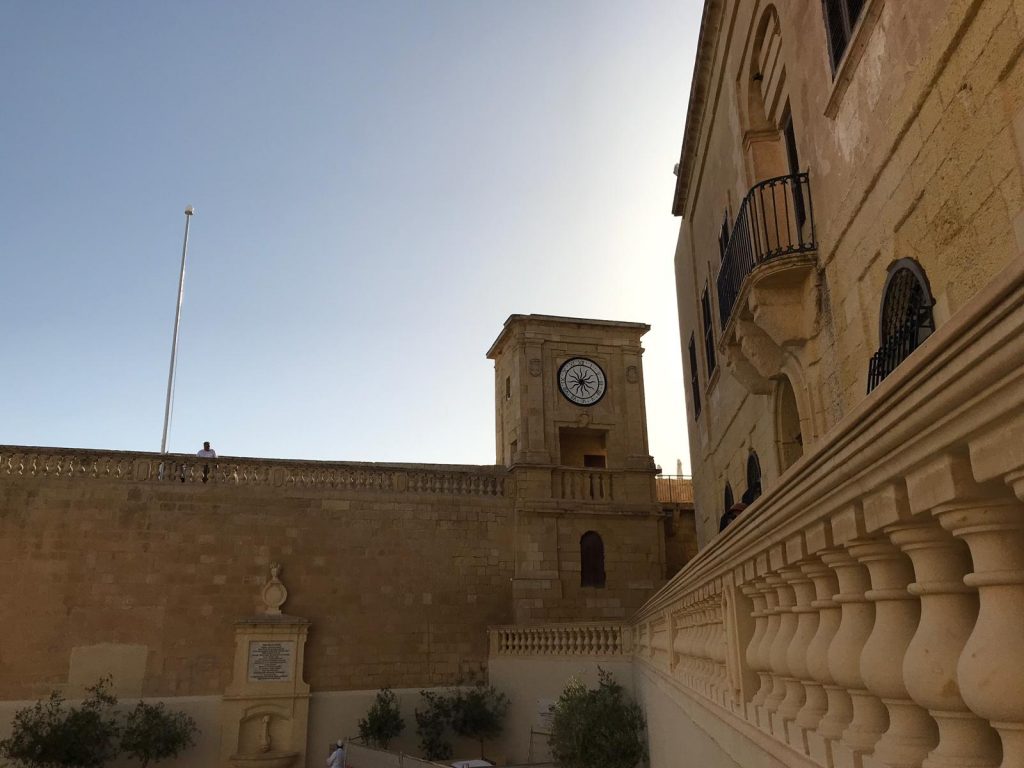
Mariam Al-Batool Mosque
We return to Malta island via ferry and head to the Mariam Al-Batool Mosque in Paola for Maghrib Ṣalāh.
This is the largest mosque in Malta and it was financed by the former ruler of Libya, Muammar Qaddafi. In 1978, he visited Malta and placed the foundation stone of the mosque. The mosque opened its doors in 1982. Until this point, there was no purpose-built prayer facility in the country and the Turkish Cemetery was often used for prayers. Legally, this is the only building that has mosque status and it continues to fall within the remit of the Libyan Embassy. Next to the Masjid is the Mariam Al-Batool School.
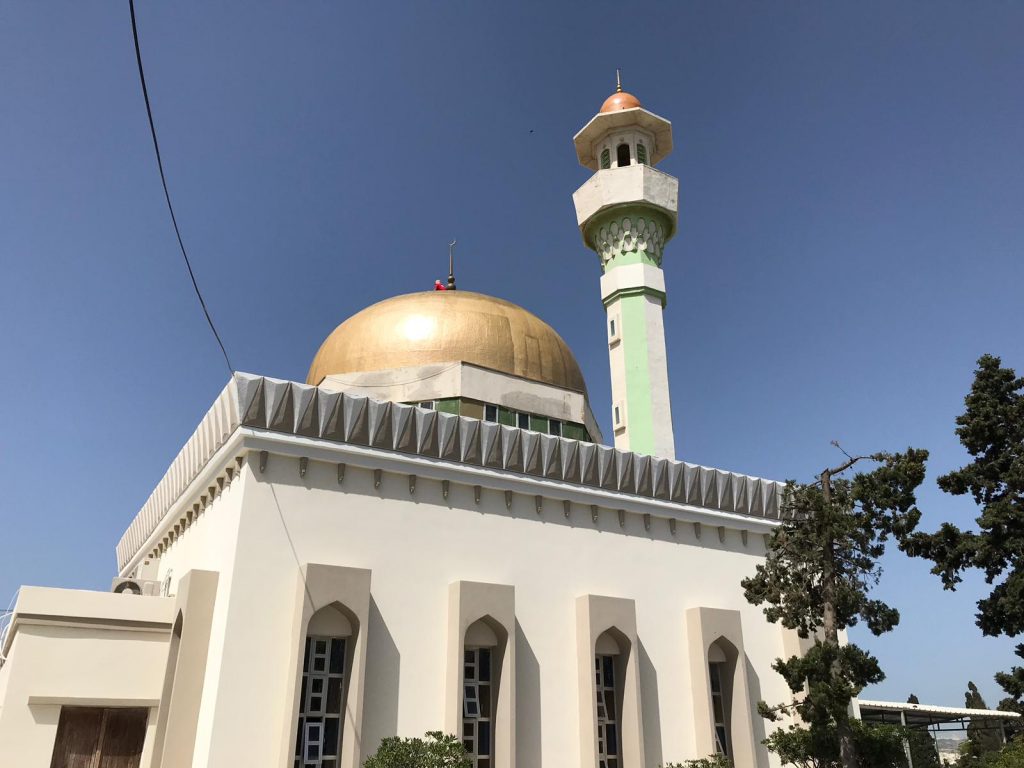
Dinner at the residence of Dr Mahmoud Abdelaziz
Our final stop in the evening is the residence of Dr Mahmoud Abdelaziz. Dr Mahmoud met us earlier in the day after Jumuʿah Ṣalāh and invited us for dinner at his residence. During introductions at his residence, we learn that he is no ordinary person. He is a former member of the Libyan Parliament and an active member and spokesperson of the Justice and Development Party of Libya. He resides in Malta and regularly features on Al-Jazeera and other media channels.
Dr Mahmoud is a very noble person. He welcomes us and makes us all feel at home. The courtesy, respect and affection that he and his children display to all of us and in particular to Mufti Ahmad Khanpuri are worth a special mention. The manner in which he spoke and shared Quranic verses and Prophetic ḥadīths enriched the evening. He has a PhD in engineering. He shares with us the current situation in Libya and describes the destructive role played by the Saudi and UAE regimes. Regarding Muammar Qaddafi, he provides a balanced view that he was an oppressor and dictator within his home country, although he did some good charitable work abroad like financing the mosque in Malta. Following his fall, there was progress in Libya and moderate religious people made significant gains. However, the Saudi, UAE and other neighbouring powers were not content as they regard the Muslim Brotherhood a great threat.
Dinner is laid out and Dr Mahmoud personally ensures that each of our plates are full with the delicious rice and meat his wife has prepared. His children also serve us and display impeccable character. We are overwhelmed with the hospitality and affection displayed towards us from someone who had only met us earlier in the day for the first time. True Arab hospitality indeed!
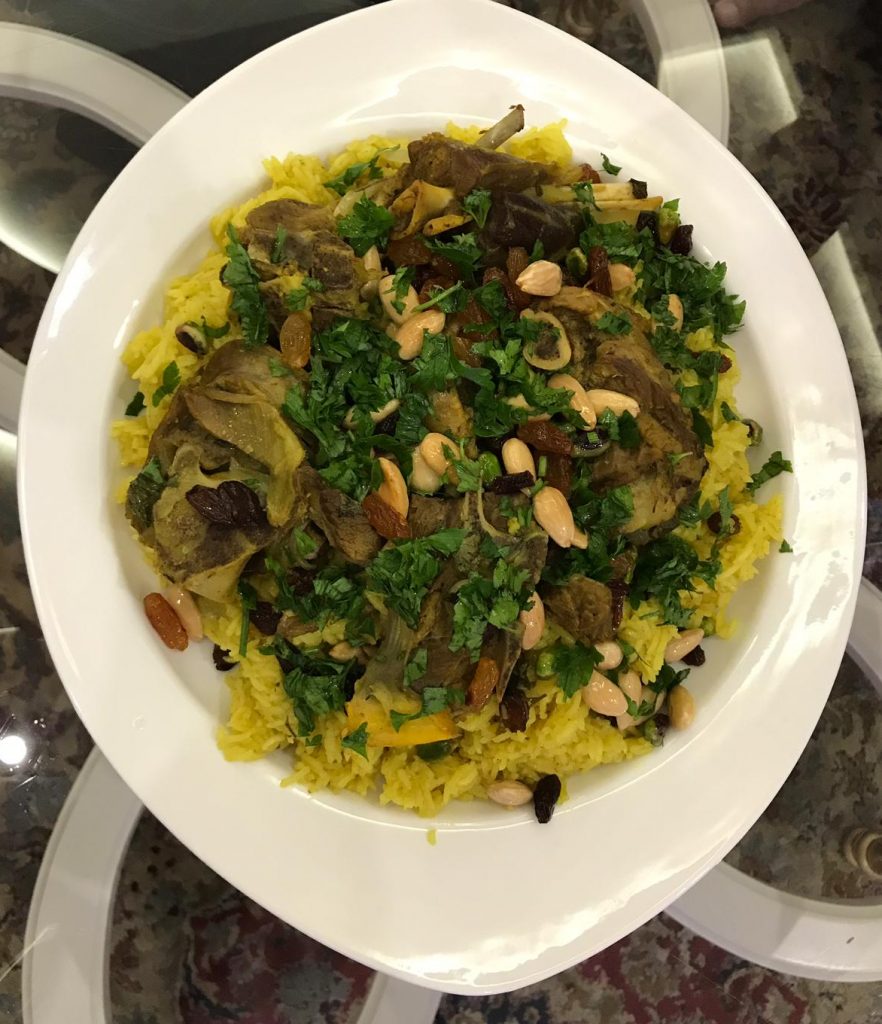
We return to Al Fateh Mosque in Floriana and rest for the evening. As the toilet facilities are at a distance, we decided earlier in the day to book a hotel nearby the Masjid for Mufti Ahmad Sahib, the Grand Hotel Excelsior. Generally, the local people are very friendly.
Day 3 – Saturday 8 June 2019
Bidding Farewell
It is now time to bid farewell to Malta. We leave from Floriana at 8am and head to Malta International Airport in Luqa. On route, we visit the Turkish Military Cemetery and check to see if we can access the inside. Fate had it otherwise. For future, we are advised to contact the Turkish Embassy in advance.
Shaykh Badr and Shaykh Muwaffaq bid us farewell, both have been extremely hospitable and generous over the past two days. We pray to Allah Almighty to accept their efforts and bless them in their endeavours.
Our group of nine led by Mufti Ahmad Khanpuri Sahib travel from Malta to Leeds Bradford Airport on the 11.35am Jet2 Airways. The flight is slightly delayed, we land at 2.30pm. We are received at the Airport by a group of thirty people and head to Dewsbury, the first point in the five day UK wide Islāḥī tour, with some programs also to be attended by Shaykh al-Islam Mufti Muhammad Taqi Usmani (b.1362/1943), who had originally planned to join us in our trip to Malta, but could not do so due to unforeseeable circumstances.
Conclusion
The life of Shaykh al-Hind and Shaykh al-Islam is one of sacrifice, endurance, perseverance and service. The late Mufakkir al-Ummah Mawlānā ʿAbdullāh Kāpodrawī (d. 1439/2018) once said to me, “Ibn Taymiyyah Raḥimahullāh was among those luminaries who excelled in writing and fighting. He was صاحب السيف والقلم. There are not many examples of luminaries who combine both. He was ahead in the battlefield as well. His opponents conducted a lot of propaganda against him.” Undoubtedly, both Shaykh al-Hind and Shaykh al-Islam were also from this category of scholars whose efforts were not confined to teaching or academia. The story of their incarceration in Malta for three years is testament to their all roundedness.
In a recent talk about our trip to Uzbekistan at the Lammack Prayer facility in Blackburn, I mentioned that we should make all of our international trips to other than the three holy places (Makkah, Madinah, al-Quds) a form of worship by making two primary intentions:
- The first is education. This can take various forms: Meeting scholars, visiting historical places, accessing manuscripts and books, visiting museums and libraries, delivering speeches, learning about our heritage and history, and connecting with the local people.
- The second is to ascertain the needs of the local people, this includes their spiritual, economic, social and personal needs. This in itself is an act of reward even if a person is unable to provide support at that time. Supplications can be made and relevant organisations, charities and individuals can also be directed to provide support.
Malta is a popular holiday destination. We only stayed for two days, there are many more historical sites and places to visit. It requires at least a few days. The Muslim population is also increasing, and with the influx of refugees, their spiritual and personal needs require examining. Some of the indigenous Maltese people are also reverting to Islam. If a person visits with the aforementioned intentions, he can transform his journey into an act of immense reward and also benefit from the perks of a popular destination in the Mediterranean.
Note: The Egyptian Shaykh Muḥammad ʿAbdurraḥmān al-Ṣabāḥī wrote a book in Arabic ‘Khamsa Sinīn fī Magāwir al-Asr’ which details his incarceration in Malta. The book was published from Egypt in 1922. We are in the process of acquiring a PDF of this book from McGill University (Montreal, Canada) as we understand he was incarcerated in the same prison and met Shaykh al-Hind. He was probably imprisoned in the Arab Camp. The book may provide further certainty in relation to the location of the prison and also other relevant information. The following entry confirms the subject of the book and its publication date:
جاء في جامع التصانيف الحديثية التي طبعت في البلاد الشرقية والغربية والأمريكية من سنة ١٩٢٠ إلى سنة ١٩٢٦ ميلادية الموافقة لسني الهجرة من ١٣٣٩ إلى ١٣٤٥ (ص ١٧): ((خمس سنين في مغاور الأسر)) ألف هذا الكتاب محمد عبد الرحمن أفندي الصباحي من مصطاي المنوفية، وصف فيه عواطفه مدة اعتقاله في مالطه. مصر، ١٩٢٢، انتهى۔
Yusuf Shabbir
Discover more from Islam Hashtag
Subscribe to get the latest posts sent to your email.


